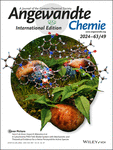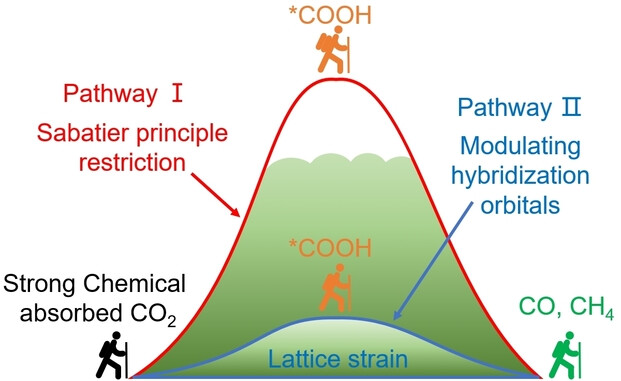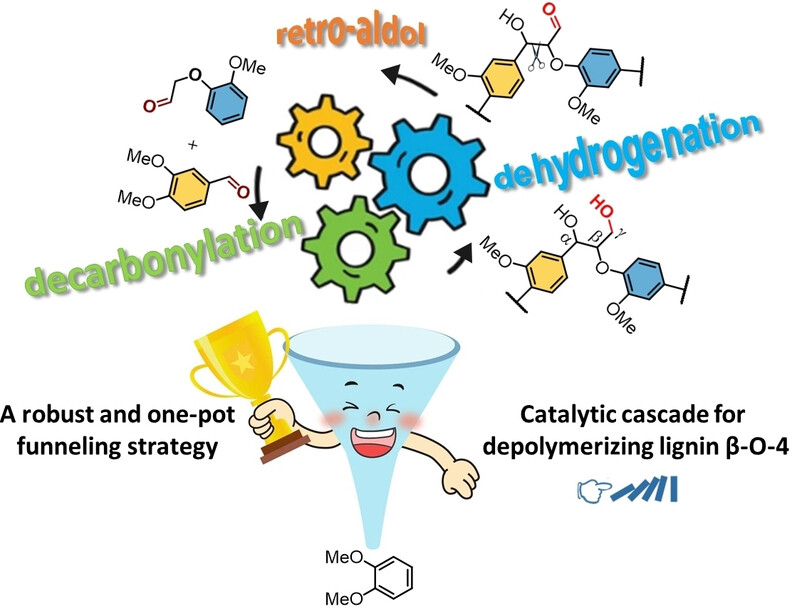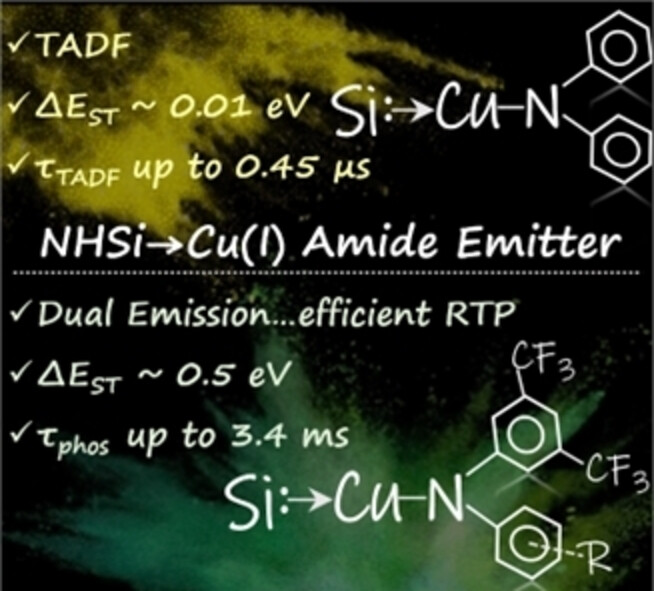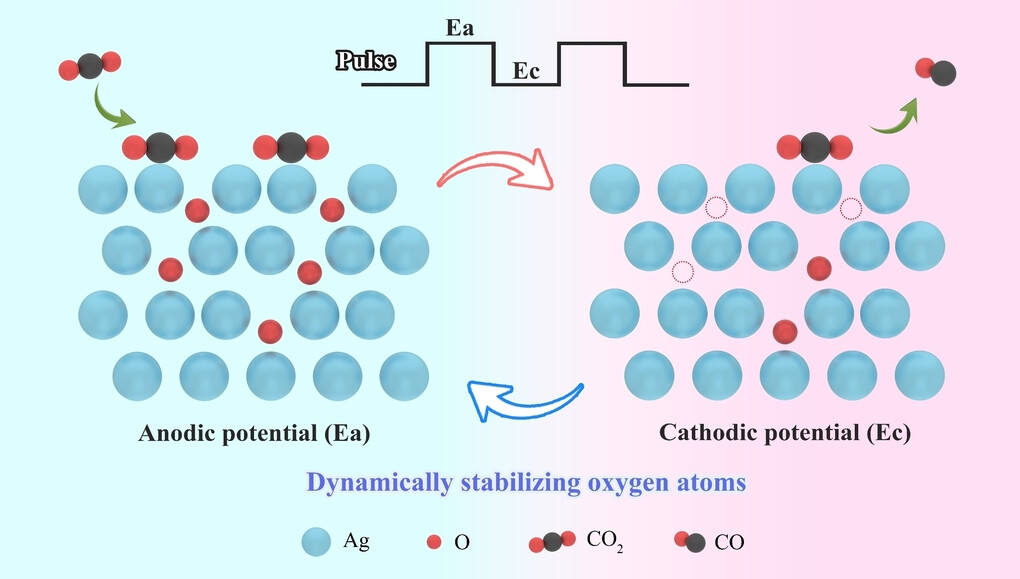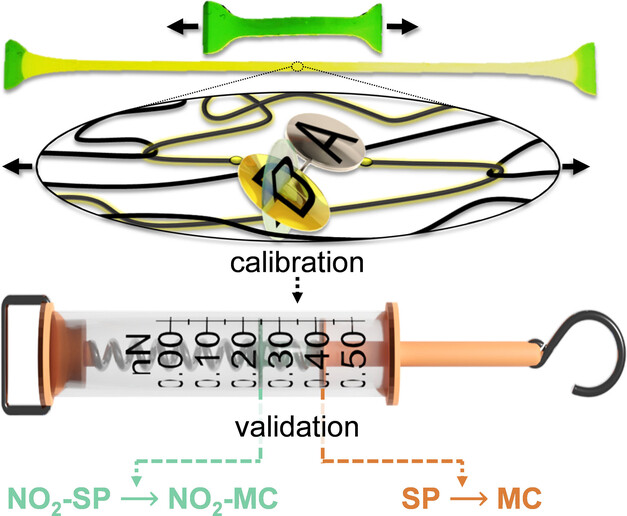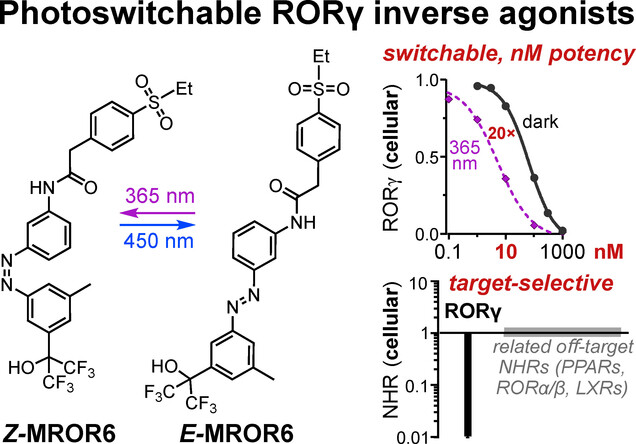Journal list menu
Export Citations
Download PDFs
Cover
Cover Picture: A Cytochrome P450 TxtE Model System with Mechanistic and Theoretical Evidence for a Heme Peroxynitrite Active Species (Angew. Chem. Int. Ed. 49/2024)
- First Published: 30 October 2024

Tryptophan nitration chemistry of an economically impactful heme enzyme, TxtE, has been modeled utilizing synthetic heme mimics by Sam P. de Visser, Gayan B. Wijeratne et al. in their Research Article (e202409430). Therein, spectroscopic and theoretical characterizations strongly suggest the occurrence of a heme peroxynitrite active species, closely paralleling mechanistic propositions put forward for TxtE enzyme. Precise mechanistic details and key structure–activity relationships present important findings to be implemented in next generation therapeutic and synthetic applications.
Inside Cover: Enhancing d/p-2π* Orbitals Hybridization via Strain Engineering for Efficient CO2 Photoreduction (Angew. Chem. Int. Ed. 49/2024)
- First Published: 24 October 2024
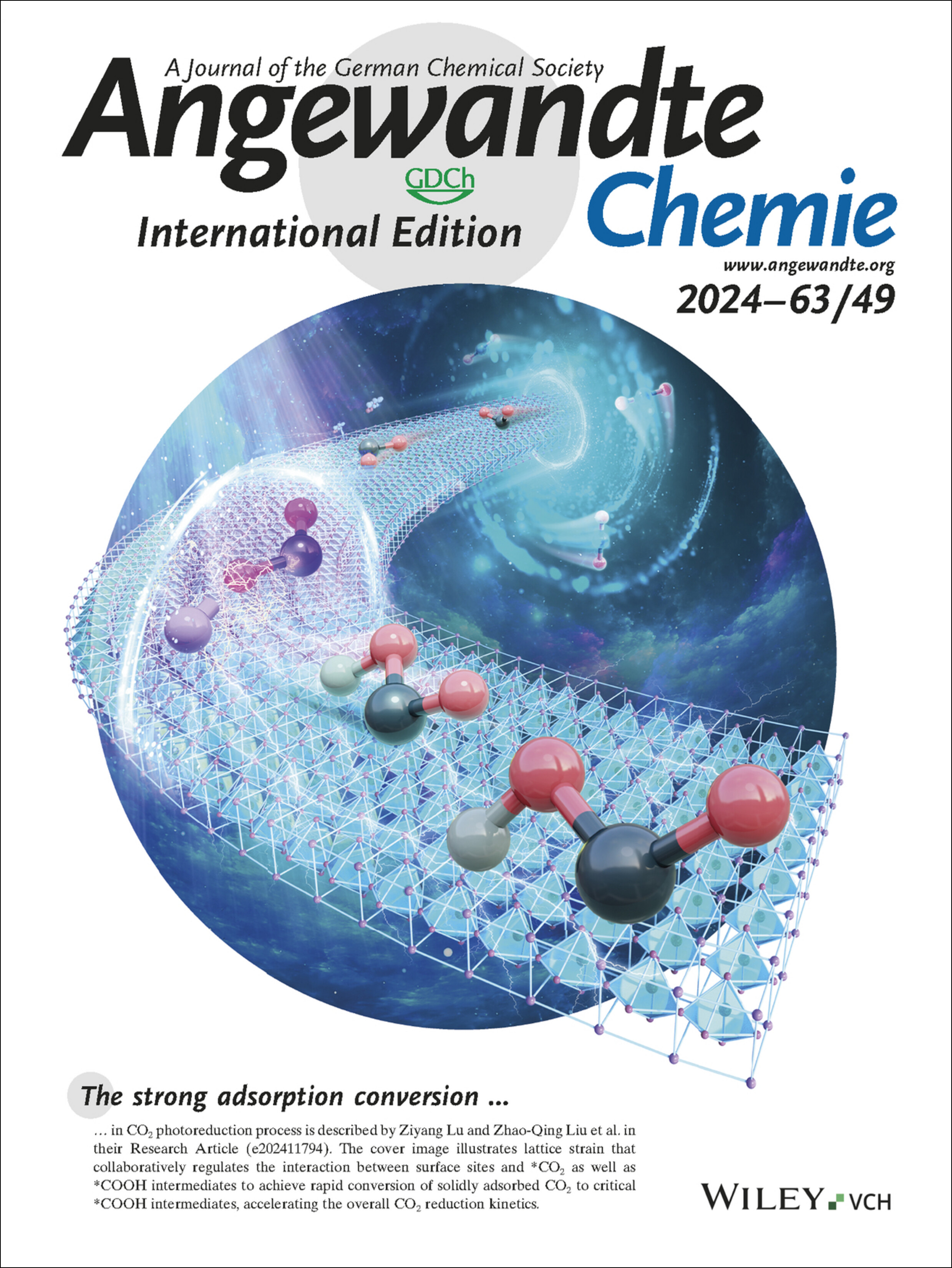
The strong adsorption conversion in CO2 photoreduction process is described by Ziyang Lu and Zhao-Qing Liu et al. in their Research Article (e202411794). The cover image illustrates lattice strain that collaboratively regulates the interaction between surface sites and *CO2 as well as *COOH intermediates to achieve rapid conversion of solidly adsorbed CO2 to critical *COOH intermediates, accelerating the overall CO2 reduction kinetics.
Inside Back Cover: Exploring Aqueous Solution-Processed Pseudohalide Rare-Earth Double Perovskite Ferroelectrics toward X-Ray Detection with High Sensitivity (Angew. Chem. Int. Ed. 49/2024)
- First Published: 24 October 2024
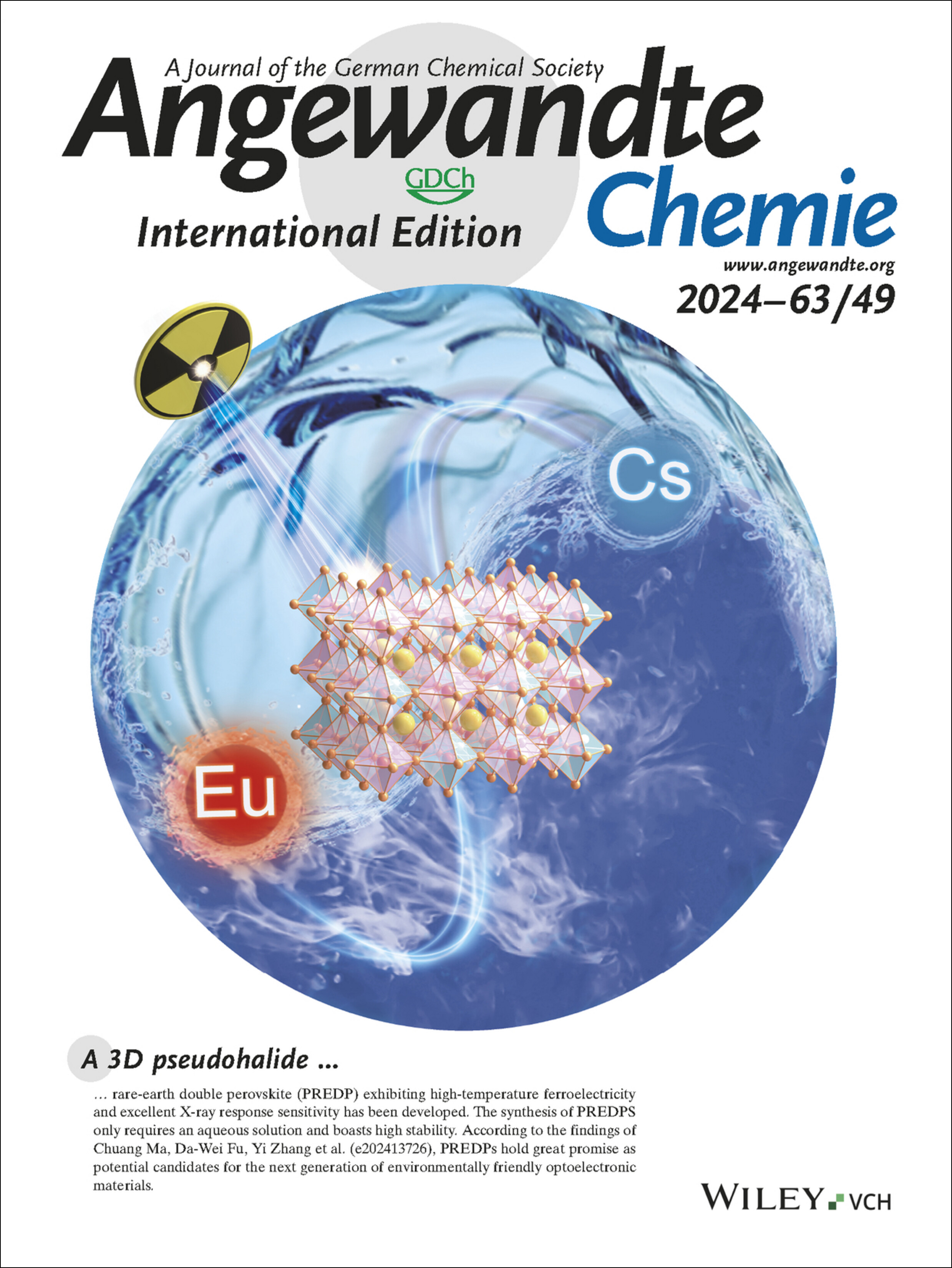
A 3D pseudohalide rare-earth double perovskite (PREDP) exhibiting high-temperature ferroelectricity and excellent X-ray response sensitivity has been developed. The synthesis of PREDPS only requires an aqueous solution and boasts high stability. According to the findings of Chuang Ma, Da-Wei Fu, Yi Zhang et al. (e202413726), PREDPs hold great promise as potential candidates for the next generation of environmentally friendly optoelectronic materials.
Back Cover: Brush-Like Polymeric Gels Enabled Photonic Crystals toward Ultrasensitive Cosolvent Chromism (Angew. Chem. Int. Ed. 49/2024)
- First Published: 24 October 2024
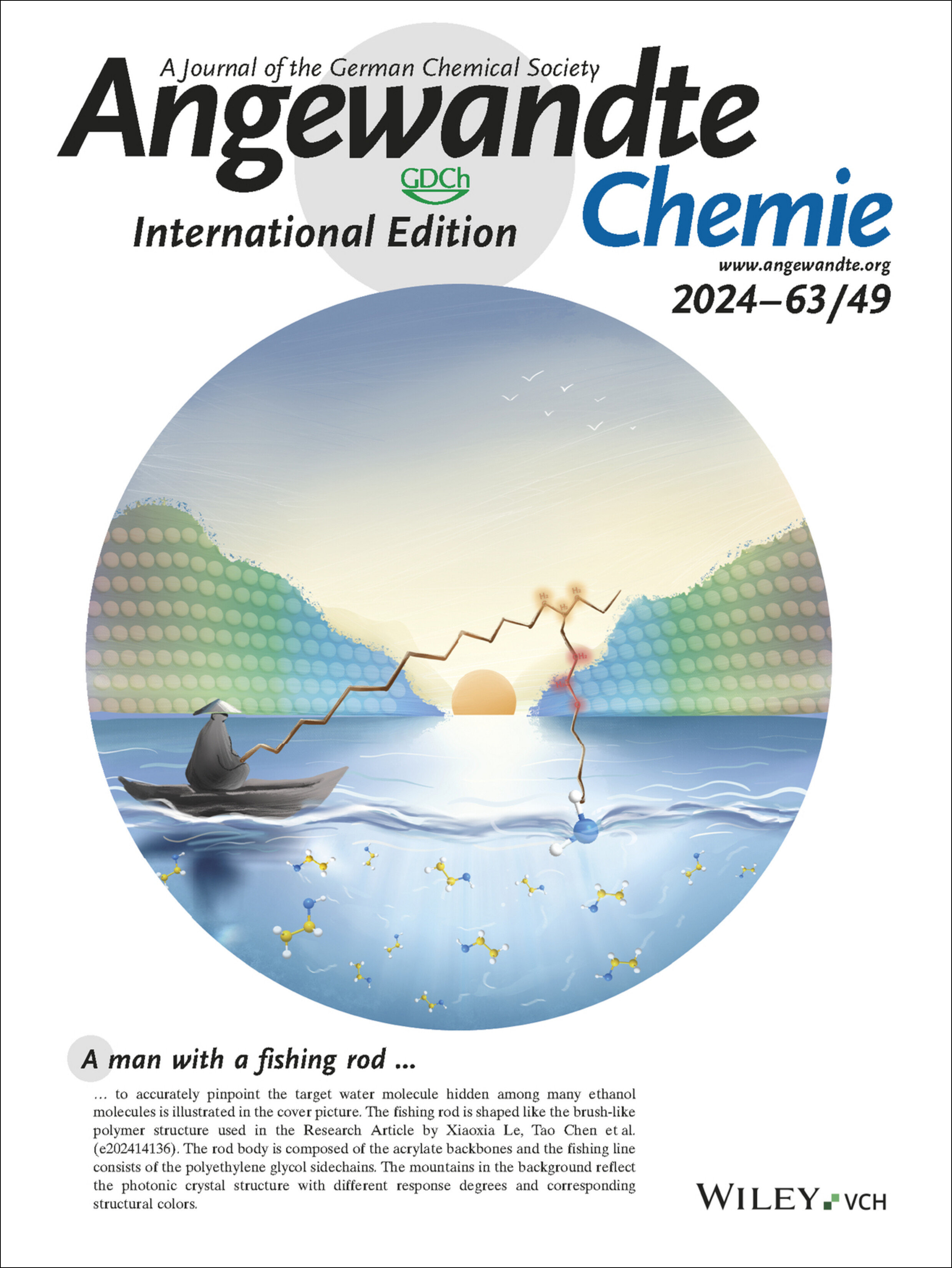
A man with a fishing rod to accurately pinpoint the target water molecule hidden among many ethanol molecules is illustrated in the cover picture. The fishing rod is shaped like the brush-like polymer structure used in the Research Article by Xiaoxia Le, Tao Chen et al. (e202414136). The rod body is composed of the acrylate backbones and the fishing line consists of the polyethylene glycol sidechains. The mountains in the background reflect the photonic crystal structure with different response degrees and corresponding structural colors.
Frontispiece
Frontispiece: Diaminonaphthalene Boronic Acid (DANBA): New Approach for Peroxynitrite Sensing Site
- First Published: 25 November 2024
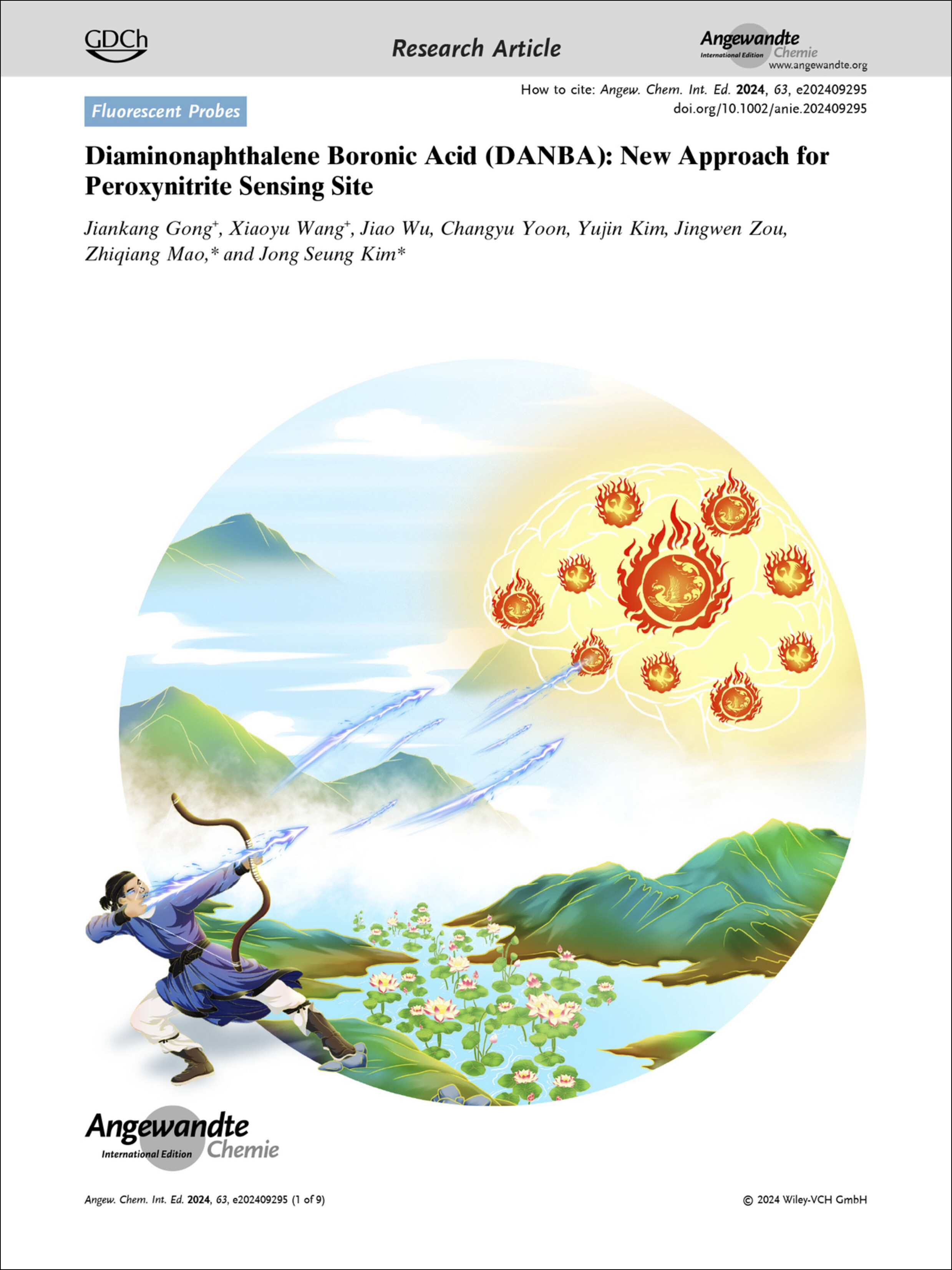
Fluorescent Probes. In their Research Article (e202409295), Zhiqiang Mao, Jong Seung Kim et al. introduce a diaminonaphthalene-protected boronic acid as a universal and highly selective recognition group for ONOO− over H2O2 and other reactive oxygen species, overcoming the long-standing issues of aryl-boronic acid-based probes.
Frontispiece: K+-Mediated vs Pd-Catalyzed Cyclotrimerization of 9,10-Didehydrotribenzo[8]annulene (TribenzoCOTyne): Stereodivergent Access to (α,α,α)- and (α,α,β)-Fragments of Cubic Graphite
- First Published: 25 November 2024
![Frontispiece: K+-Mediated vs Pd-Catalyzed Cyclotrimerization of 9,10-Didehydrotribenzo[8]annulene (TribenzoCOTyne): Stereodivergent Access to (α,α,α)- and (α,α,β)-Fragments of Cubic Graphite Volume 63 Issue 49, 2024](/cms/asset/117d8bba-294f-4f25-94b3-b80df4db86fb/anie202484962-toc-0001-m.jpg)
Annulenes. In their Communication (e202414017), Jesús Bello-García, Jesús A. Varela, and Carlos Saá report the K+-mediated versus Pd-catalyzed cyclotrimerization of 9,10-didehydrotribenzo[8]annulene to access stereodivergent fragments of cubic graphite.
Graphical Abstract
Graphical Abstract: Angew. Chem. Int. Ed. 49/2024
- First Published: 25 November 2024
Introducing …
Highlight
Nanomaterials
Disorder Over Pore Size: Boosting Supercapacitor Efficiency
- First Published: 19 September 2024
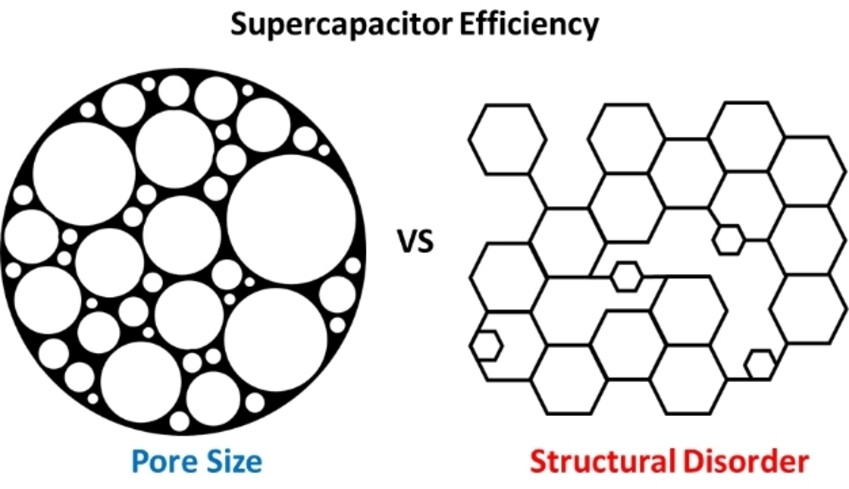
In a recent study, Forse and co-workers show that structural disorder in nanoporous carbon materials significantly enhances capacitance performance, surpassing traditional factors like pore size and surface area. This discovery provides a new direction for the development of high-energy-density supercapacitors, guiding the design and synthesis of new efficient electrode materials.
Minireview
Photocatalysis
Engineering Polyheptazine and Polytriazine Imides for Photocatalysis
- First Published: 27 August 2024
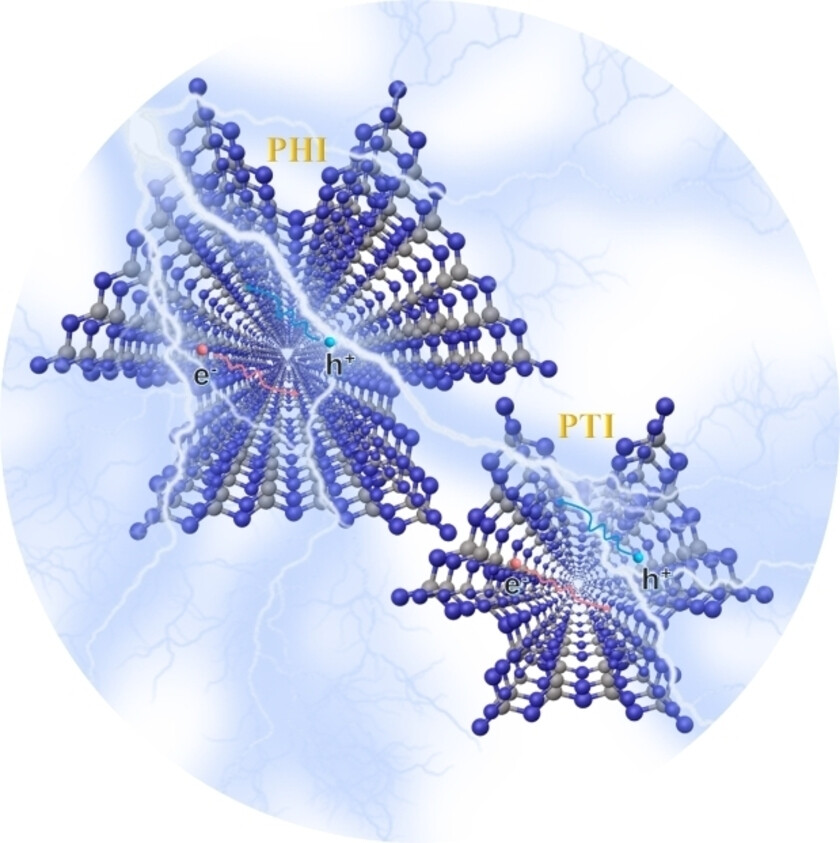
This Minireview introduces the generation methods, physical and chemical properties, band structures, synthetic strategies, characterization methods, modification strategies and advantages of poly (heptazine imide) (PHI) and poly (triazine imide) (PTI) in various photocatalytic reactions. The current challenges and potential opportunities for using PHI/PTI as photocatalysts are presented.
Covalent Organic Frameworks
Celebrating Ten Years of Covalent Organic Frameworks for Solar Energy Conversion: Past, Present and Future
- First Published: 21 August 2024
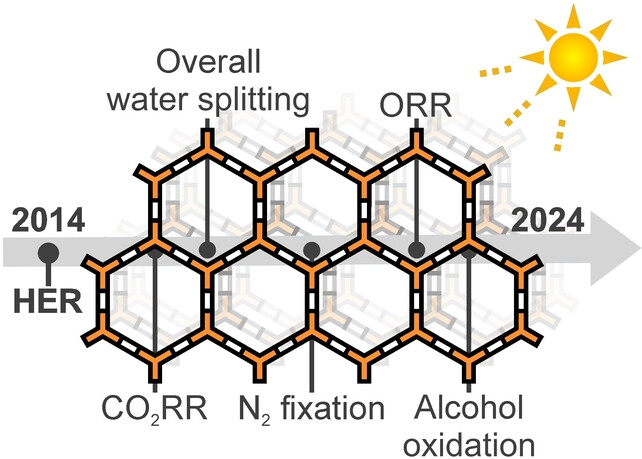
With the first report of covalent organic frameworks as photocatalysts for the hydrogen evolution reaction (HER) in 2014, a new type of “soft photocatalyst” was released. Here, a historical overview as well as the current state of the art and future perspectives on various photocatalytic reactions including CO2 reduction (CO2RR), overall water splitting, N2 fixation, oxygen reduction (ORR), and alcohol oxidation, are given.
Review
Supramolecular Chemistry
Reactivity Inside Molecular Flasks: Acceleration Modes and Types of Selectivity Obtainable
- First Published: 19 September 2024
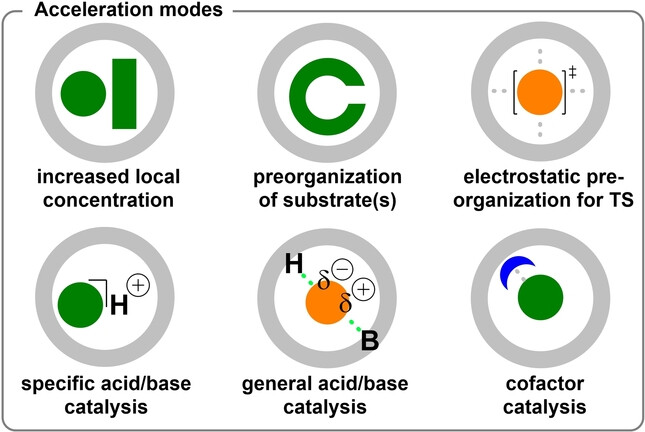
Molecular flasks are hollow supramolecular structures capable of catalyzing organic reactions, often exhibiting complex catalytic mechanisms and selectivity not achievable in bulk solvent. This Review discusses the different acceleration modes that operate within molecular flasks, and showcases the different types of selectivity that are obtainable through their use, focusing on examples relevant to current challenges in synthetic organic chemistry. We believe this summary will facilitate the design and development of novel catalysis examples inside molecular flasks
Research Article
Fluorescent Probes
Diaminonaphthalene Boronic Acid (DANBA): New Approach for Peroxynitrite Sensing Site
- First Published: 16 August 2024
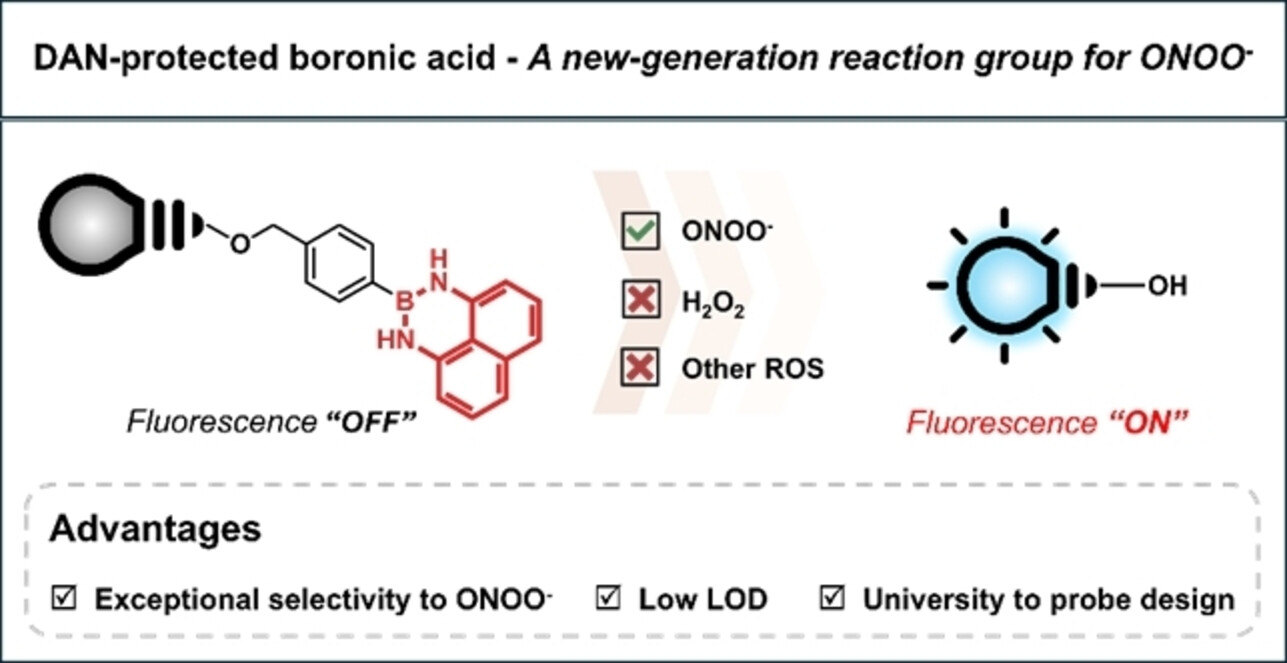
Diaminonaphthalene (DAN)-protected boronic acid (DANBA) proved to be a universal and highly selective recognition group for ONOO− over H2O2 and other reactive oxygen species, overcoming the long-standing issues of aryl-boronic acid-based probes. DANBA can be combined with diverse hydroxyl-containing fluorophores to obtain ONOO− sensing probes with different spectral emissions. A DANBA and malononitrile fluorophore-based probe detected subtle changes in the ONOO− levels of mouse brains with Parkinson's disease.
Heme Models
A Cytochrome P450 TxtE Model System with Mechanistic and Theoretical Evidence for a Heme Peroxynitrite Active Species
- First Published: 01 August 2024

Efficient modelling of the economically impactful enzyme, TxtE, has been probed, in which indole (tryptophan mimic) nitration was observed by a putative heme-peroxynitrite intermediate, resembling one of the prime enzymatic mechanistic proposals. Experimental and theoretical exploration of the mechanism reveal a unique reaction landscape dictated by NO2 radical species.
Photocatalysis
Enhancing d/p-2π* Orbitals Hybridization via Strain Engineering for Efficient CO2 Photoreduction
- First Published: 12 August 2024
Ferroelectrics | Hot Paper
Exploring Aqueous Solution-Processed Pseudohalide Rare-Earth Double Perovskite Ferroelectrics toward X-Ray Detection with High Sensitivity
- First Published: 29 August 2024
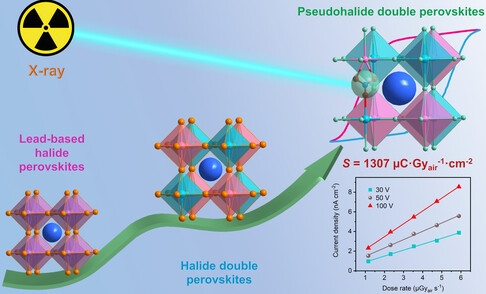
The first high-temperature hybrid pseudohalide rare-earth double perovskite (HPREDP) ferroelectric was obtained by rationally designed. Further, we explored application of HPREDP ferroelectric in X-ray detection, and achieved the highest sensitivity of 1307 μC Gyair−1 ⋅ cm−2 (among all hybrid double perovskite ferroelectric detectors).
Photonic Gels | Hot Paper
Brush-Like Polymeric Gels Enabled Photonic Crystals toward Ultrasensitive Cosolvent Chromism
- First Published: 19 August 2024
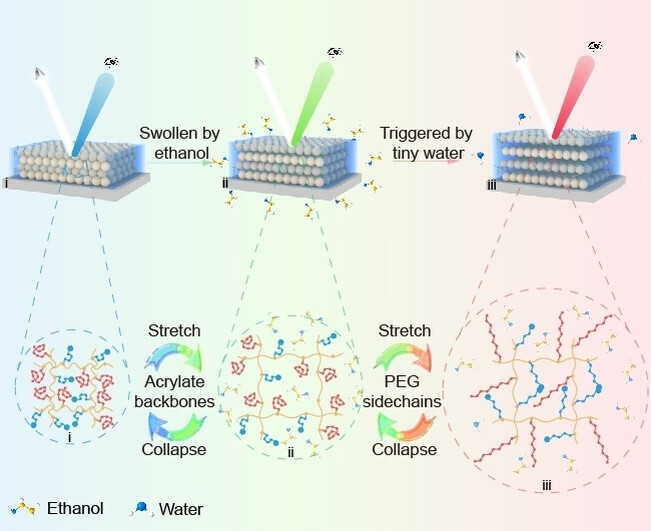
A brush-like polymeric photonic gel (BPPG) was constructed by using the assembled ZnS@SiO2 nanoparticles as a photonic crystal template and in situ polymerizing oligo ethylene glycol acrylate. Owing to the cosolvency-induced incremental stretching of acrylate backbones and polyethylene glycol side-chains in ethanol-water mixtures, the prepared BPPG exhibited sensitive chromatic responses within ethanol-rich concentrations.
Dual-Atom Catalysis | Hot Paper
Atomic Printing Strategy Achieves Precise Anchoring of Dual-Copper Atoms on C2N Structure for Efficient CO2 Reduction to Ethylene
- First Published: 09 September 2024
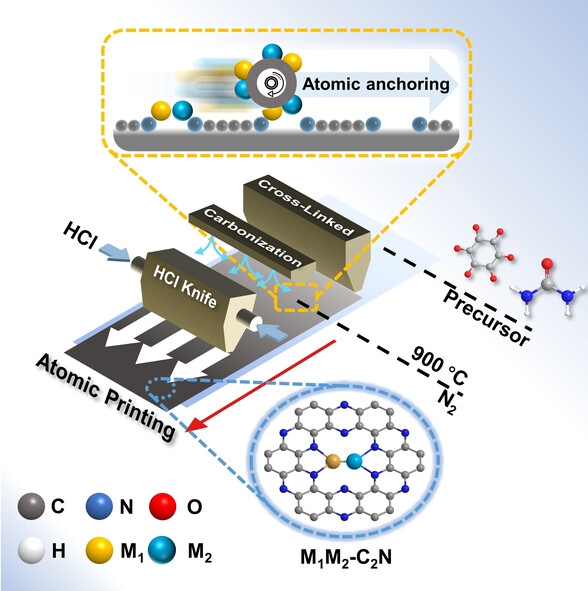
We successfully develop a universal atomic imprinting synthesis strategy for the preparation of dual-atom catalysts, with a particular focus on the synthesis of a dual-atom Cu catalyst for the electrochemical CO2 reduction to ethylene. The dual-atom copper catalyst developed in this research exhibits impressive electrocatalytic performance, achieving a remarkable 71.7 % ethylene Faradaic efficiency at an applied potential of −1.1 V vs RHE.
Biochemistry
Indole N-Linked Hydroperoxyl Adduct of Protein-Derived Cofactor Modulating Catalase-Peroxidase Functions
- First Published: 19 September 2024
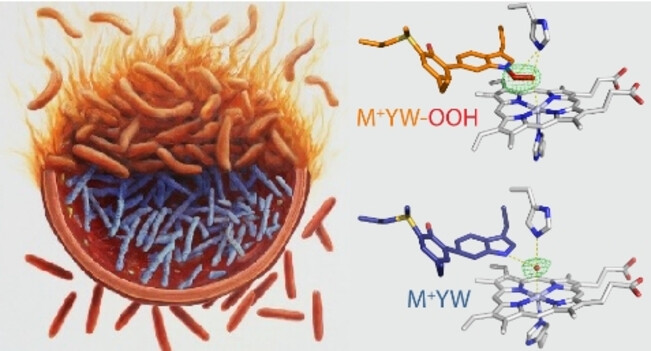
Catalase-peroxidase (KatG) neutralizes hydrogen peroxide during infection. Mycobacterium tuberculosis KatG from cells grown at ambient temperature contains an indole nitrogen-linked hydroperoxyl adduct, MYW-OOH (golden color). MYW-OOH transiently inhibits catalase activity, presenting a unique off switch. Exposure to peroxide or increased temperature converts MYW-OOH to MYW (blue color) and restores KatG's detoxifying ability.
Zeolites
Quantifying the Hydration-Dependent Dynamics of Cu Migration and Activity in Zeolite Omega for the Partial Oxidation of Methane
- First Published: 13 August 2024
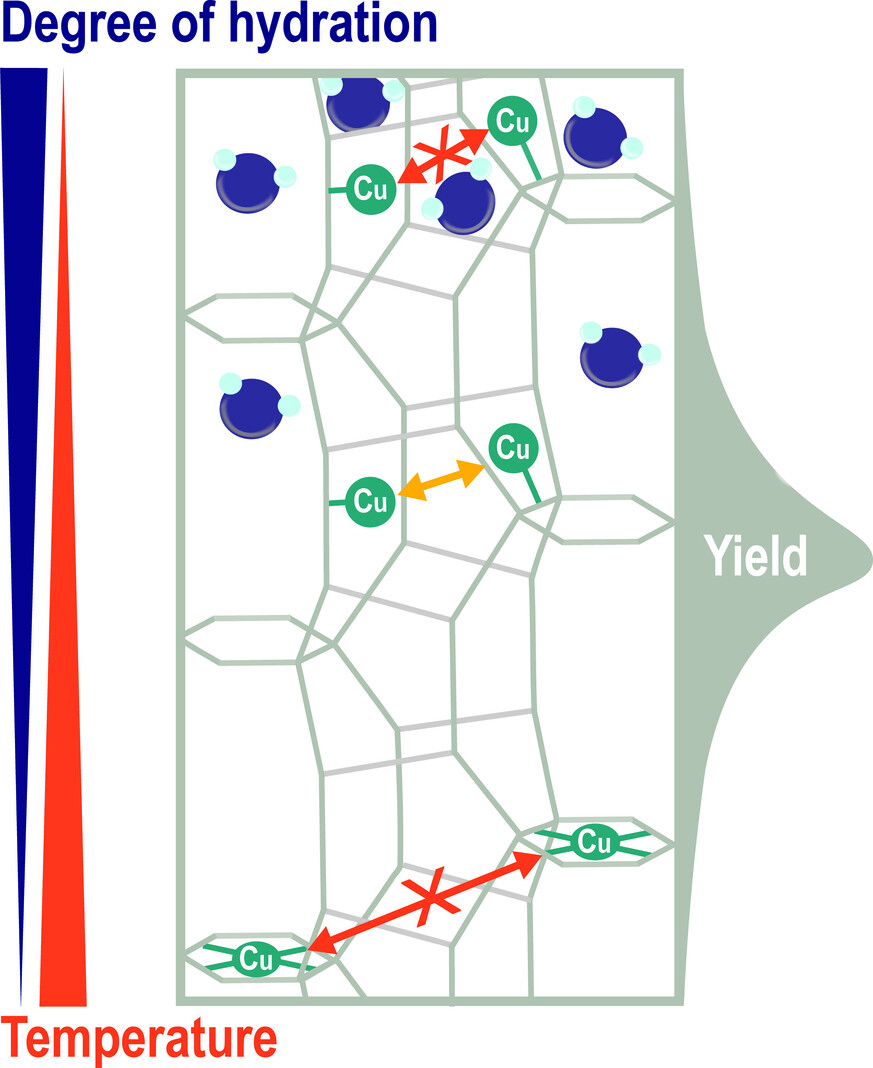
Cu-exchanged zeolite omega's (Cu-omega) activity in partial methane oxidation via oxygen looping significantly varies with the conditions applied. Using primarily in situ anomalous x-ray powder diffraction (AXRPD) the source of this divergent behavior is revealed to be due to a migration of Cu throughout the framework, which in turn is predominantly controlled by the system's degree of hydration.
Circularly Polarized Luminescence
Loading Dyes into Chiral Cd/Zn-Metal–Organic Frameworks for Efficient Full-Color Circularly Polarized Luminescence
- First Published: 04 October 2024

The sizes of chiral MOFs can be controlled from sub-20 μm to over 7 mm by tuning the types and additional amounts of organic dyes. The full-color circularly polarized luminescence MOFs are synthesized by different dyes encapsulation, which are further assembled into a white CPL light-emitting diode.
Cross-Coupling
Enantioconvergent Cross-Nucleophile Coupling: Copper-Catalyzed Deborylative Cyanation
- First Published: 12 September 2024

We report a general deborylative cyanation protocol representative of an enantioconvergent cross-nucleophile coupling platform. Mechanistic study suggests the formation of prochiral alkyl radicals via aniline-assisted single-electron activation of organoboron species. Electronic structure analysis of the reactive CuII(CN)2 complex indicates a significant amount of ligand-based radical density.
Drug Screening
Chemical Recording of Pump-Specific Drug Efflux in Living Cells
- First Published: 26 September 2024
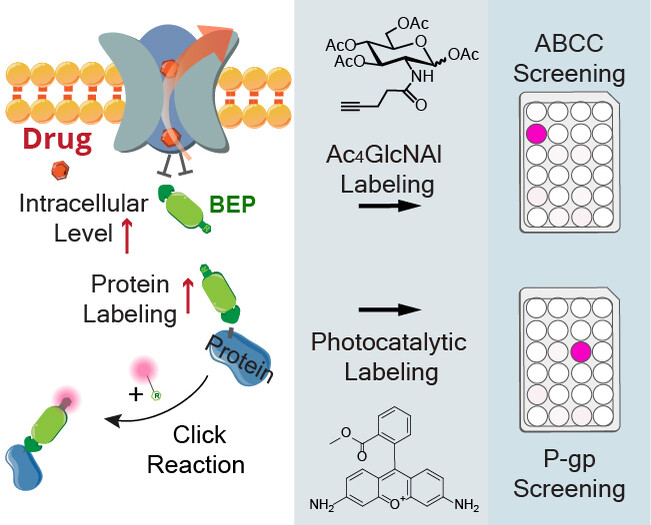
In the bioorthogonal reporter inhibiting efflux (BRIEF) strategy, the drug of interest competes with the efflux of BEP through specific pumps, resulting in the accumulation of BEP within the cells. The elevated intracellular levels of BEP induced by the drug contribute to a heightened extent of protein labeling. We developed two BEPs based on per-O-acetylated unnatural monosaccharide labeling and photocatalytic proximity labeling to record drug efflux by multidrug resistance proteins and p-glycoprotein, respectively.
Sustainable Chemistry
Ultra-Narrow Alkane Product Distribution in Polyethylene Waste Hydrocracking by Zeolite Micro-Mesopore Diffusion Optimization
- First Published: 11 September 2024
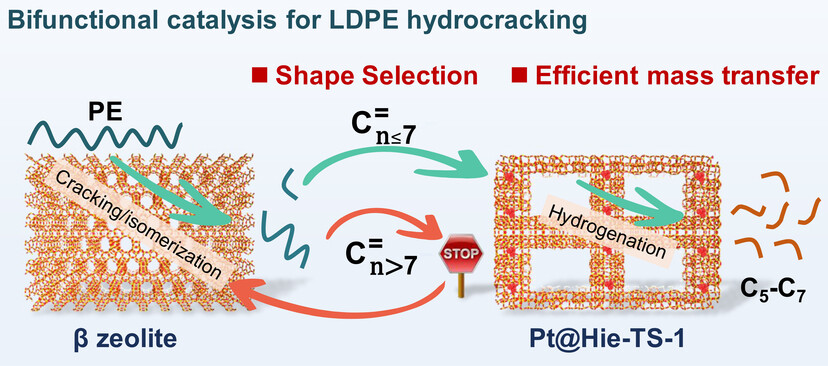
Utilizing zeolite micro-mesopore diffusion optimization, this study engineers a bifunctional catalytic system that achieves 94.0 % conversion of plastic waste into liquid alkanes, with 84.8 % in the C5−C7 range, significantly enhancing catalytic efficiency and selectivity for upcycling of polymers into high-value fuels.
Zinc Metal Batteries
Interfacial Engineering of Polymer Membranes with Intrinsic Microporosity for Dendrite-Free Zinc Metal Batteries
- First Published: 28 August 2024
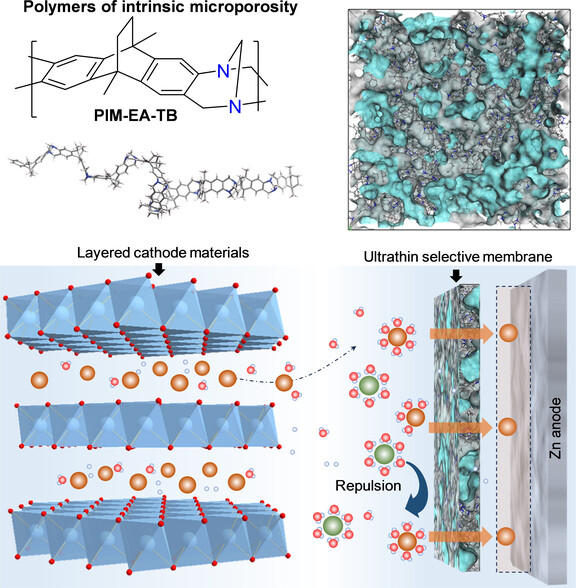
Polymers of intrinsic microporosity (PIMs) containing hydrophilic Tröger's base groups were coated as ultrathin selective membranes on zinc metal anodes to regulate the ion transport and electrochemical reactions at interfaces. The PIM membranes regulate the zinc ion transport and effectively mitigate zinc dendrite growth, as well as reduce corrosive side reactions, leading to safe and stable zinc metal batteries.
Systems Chemistry
Self-Organized Patterns in Non-Reciprocal Active Droplet Systems
- First Published: 25 September 2024

Binary mixtures of droplets exhibiting non-reciprocal active interactions self-organize into dynamic patterns upon tuning the number ratio and size ratio of the two populations and the surfactant composition. A minimal mathematical model recapitulates the experimentally observed patterns. The chemical organizing principles governing the binary droplet system are extendable to multicomponent active droplet mixtures.
Oligonucleotides
Accessing Therapeutically-Relevant Multifunctional Antisense Oligonucleotide Conjugates Using Native Chemical Ligation
- First Published: 11 August 2024

Peptide and carbohydrate-antisense oligonucleotide (ASO) conjugates containing clinically-relevant phosphorothioate (PS) and locked-nucleic acid (LNA) backbone modifications are efficiently prepared using native chemical ligation. Chemoselective post-ligation modification of ASO conjugates is accomplished using radical desulfurization and cysteine modification chemistry to deliver valuable multifunctional constructs.
NMR Spectroscopy | Hot Paper
Dynamic Nuclear Polarization with Conductive Polymers
- First Published: 12 September 2024
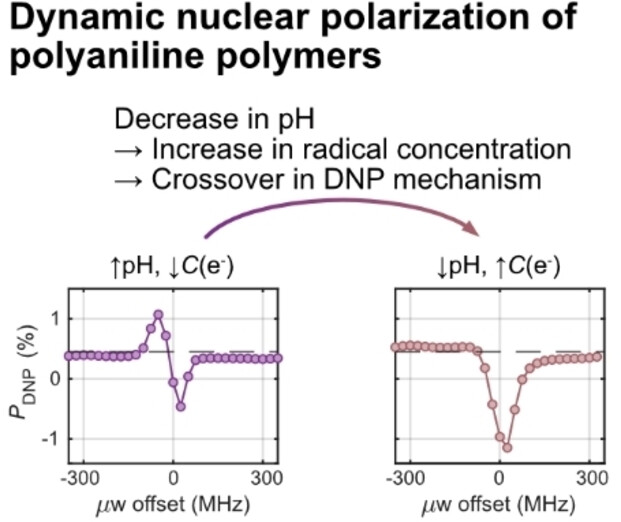
Conductive polymers such as polyaniline are promising polarizing agents for dynamic nuclear polarization. They are tunable, can be functionalized, and their unpaired electrons can be hyperpolarized by chiral-induced spin selectivity. We show solid-state dynamic nuclear polarization of polyaniline at liquid helium temperatures with an intriguing mechanism crossover as radical concentration is increased.
Nitrate Reduction Reaction
Transition Metal-Gallium Intermetallic Compounds with Tailored Active Site Configurations for Electrochemical Ammonia Synthesis
- First Published: 03 September 2024
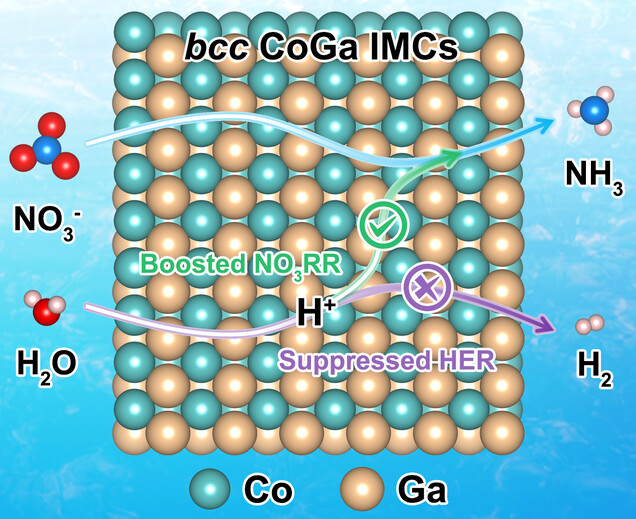
The obtained CoGa intermetallic compounds with body-centered cubic (bcc) structure and isolated electron-rich Co atoms enhance the adsorption strength of *NO3 intermediate and simultaneously suppress the formation of hydrogen, which effectively reduces the energy barrier of the potential-determining step in the electrochemical nitrate reduction reaction (NO3RR) process, thus significantly improving the NO3RR activity and selectivity.
Enzyme Evolution
High-Throughput Absorbance-Activated Droplet Sorting for Engineering Aldehyde Dehydrogenases
- First Published: 01 August 2024
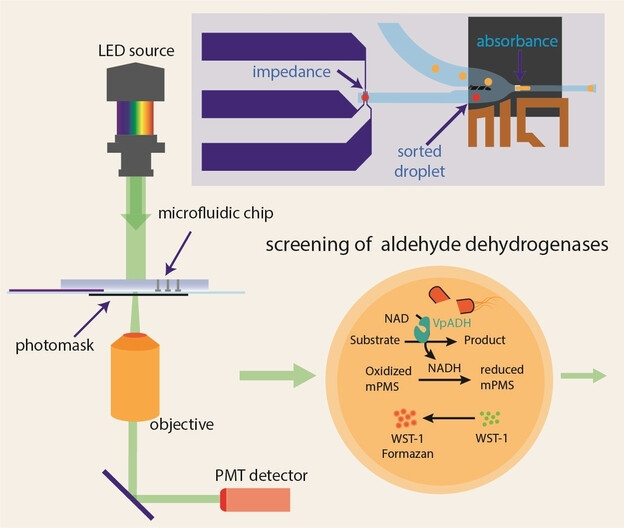
An absorbance-activated droplet sorting platform was developed for library screening. Absorbance in picoliter droplets is measured using a lithographic mask, with sorted droplets identified by impedance detection. This method allows sensitive detection and sorting at kHz rates. The efficiency of the platform is demonstrated by screening a 105-member aldehyde dehydrogenase library, yielding a variant with a 51 % improvement in catalytic efficiency.
Sustainable Chemistry
A Room-Temperature Lithium-Restocking Strategy for the Direct Reuse of Degraded LiFePO4 Electrodes
- First Published: 02 October 2024
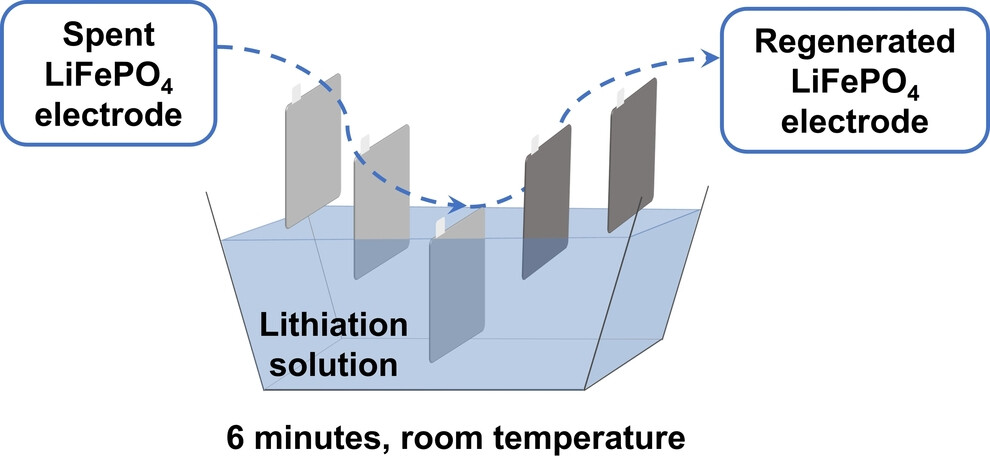
A facile strategy for the direct reuse of spent LiFePO4 electrodes is developed by simply soaking the spent electrodes in a lithiation reagent solution at room temperature for 6 min. Being reused directly, the regenerated LiFePO4 electrode delivers a high specific capacity of 162.6 mAh g−1 even after being exposed in air for 3 months.
Computational Chemistry
Can Deep Learning Search for Exceptional Chiroptical Properties? The Halogenated [6]Helicene Case
- First Published: 27 September 2024
![Can Deep Learning Search for Exceptional Chiroptical Properties? The Halogenated [6]Helicene Case](/cms/asset/ee566051-5dfd-48ae-9ac2-fd7b5867ea5c/anie202409998-toc-0001-m.jpg)
In this work, we have focused on one of the most important chiral motifs, [6]helicene, and we have predicted the effect of halogenation on its chiroptical properties using Deep Learning. We have developed three machine learning models, which allow us to evaluate millions of compounds and learn the reasons that favor some substitutions. With the knowledge gained, we synthesized the most favored candidates, exhibiting the predicted properties.
Peptide Therapeutics
Potent and Protease Resistant Azapeptide Agonists of the GLP-1 and GIP Receptors
- First Published: 16 August 2024
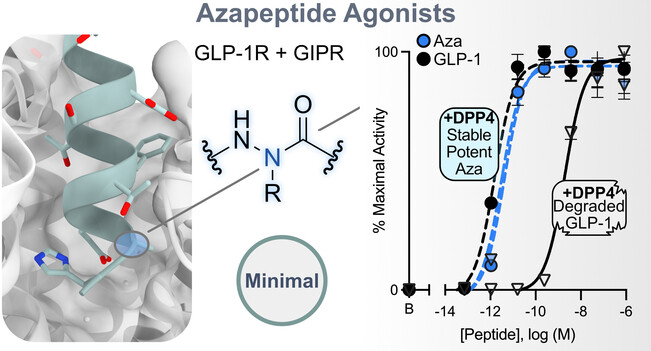
Azapeptides are highly structured and protease resistant peptidomimetics that are bioisosteric replacements for α-amino acids. A single atom change in 3.5 kDa peptides from Cα to Nα was used to generate equipotent GLP-1R and GIPR mono agonists, and a unimolecular dual agonist. All azapeptide analogues were fully refractory to the front-line protease, DPP4, that degrades GLP-1 and GIP within minutes.
Piezoelectric Catalysis | Hot Paper
Triphasic Hydroxysilylation of Alkenes by Mechanically Piezoelectric Catalysis
- First Published: 12 August 2024

A mechanochemical strategy for the 1,2-hydroxysilylation of both activated and unactivated alkenes using silylboronate and oxygen gas, facilitated by piezoelectric materials (Li2TiO3) serving as a redox catalyst in a triphasic catalytic system is introduced. This approach offers multiple advantages, including a brief reaction time of 30 minutes, solvent-free conditions, catalyst recyclability, and the avoidance of the need for strong base activation of silylboronate or external reductants.
Solar Cells | Hot Paper
25.71 %-Efficiency FACsPbI3 Perovskite Solar Cells Enabled by A Thiourea-based Isomer
- First Published: 14 August 2024
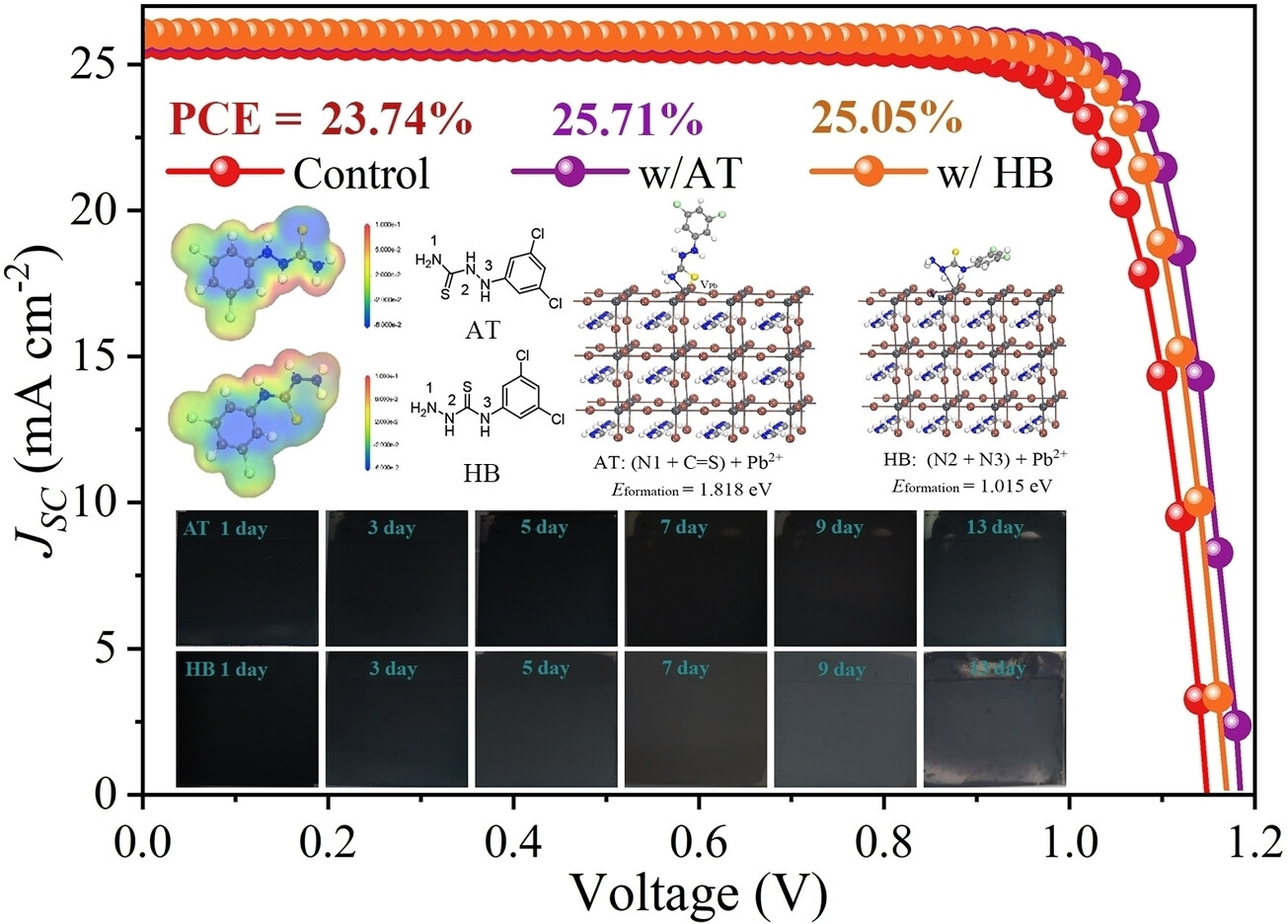
Here, thiourea isomer derivatives [(3,5-dichlorophenyl)amino]thiourea (AT) and N-(3,5-dichlorophenyl)hydrazinecarbothioamide (HB) were developed. It is found that AT can effectively regulate crystallization process and passivate defects of perovskite by binding with undercoordinated Pb2+ through synergistic interaction between N1 and C=S group with a defect formation energy of 1.80 eV. The AT-treated device engenders an efficiency of 25.71 % and excellent stability.
DNAzymes | Very Important Paper
Hydrogen Sulfide-Triggered Artificial DNAzyme Switches for Precise Manipulation of Cellular Functions
- First Published: 26 September 2024
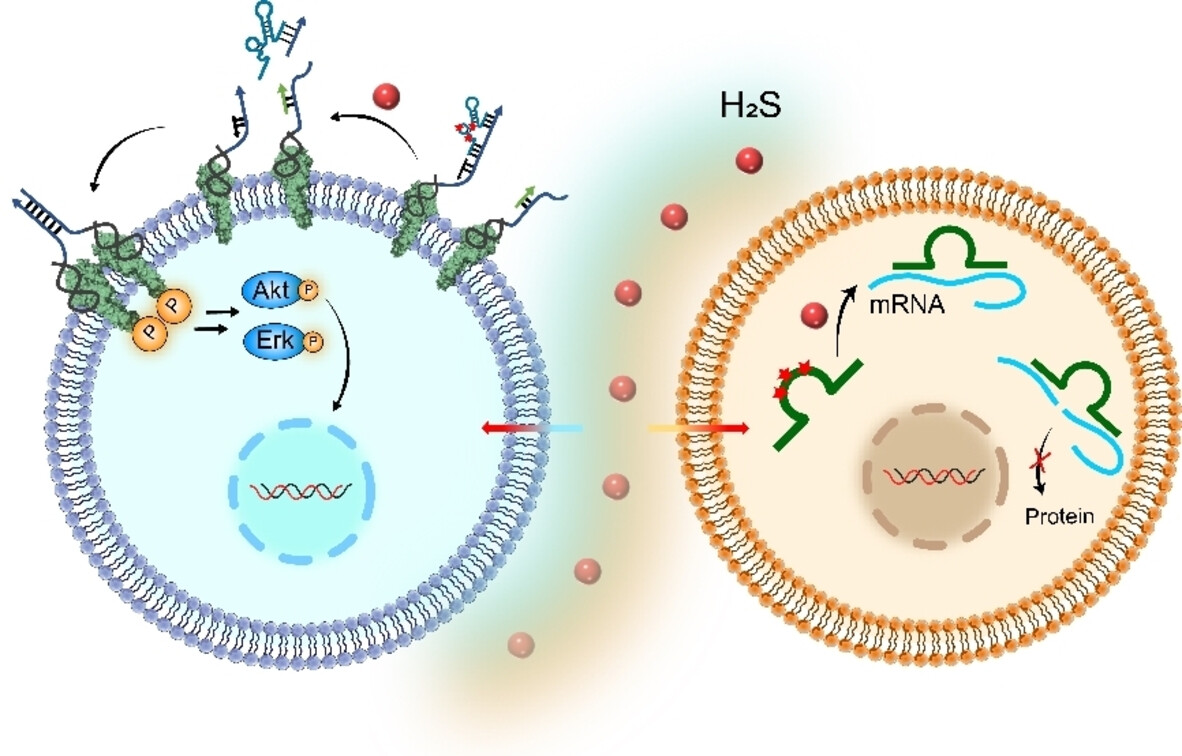
Gas signaling molecule-responsive artificial DNAzyme-based switches (GRAS) have been developed as H2S-driven nanodevices for manipulating cellular functions. GRAS is highly programmable and versatile, enabling the customization of user-defined H2S signaling inputs to down-regulate mRNA expression and activate RTK signaling pathways at various subcellular levels, thereby allowing for precise regulation of cell behavior.
Lignin Valorization | Very Important Paper
One-Pot Catalytic Cascade for the Depolymerization of the Lignin β-O-4 Motif to Non-phenolic Dealkylated Aromatics
- First Published: 31 July 2024
Metal-Organic Frameworks | Hot Paper
Solution-Processable MOF-on-MOF System Constructed via Template-Assisted Growth for Ultratrace H2S Detection
- First Published: 26 August 2024
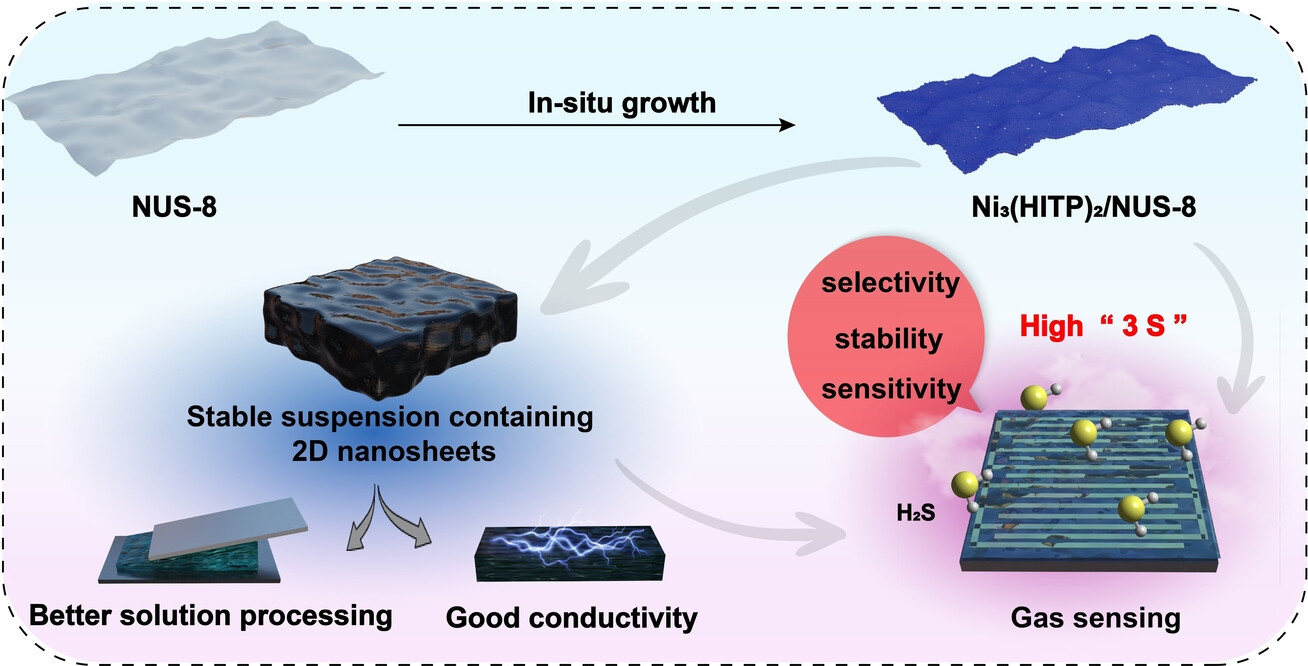
The stable Ni3(HITP)2/NUS-8 systems, synthesized via an innovative template-assisted approach, display high conductivity, porosity, and solution processability. Gas sensors utilizing these systems demonstrate significant sensitivity to ultratrace H2S at room temperature and outstanding selectivity. Additionally, wearable sensors integrating these systems can capture human motion signals, opening up new possibilities for such devices.
Organic Chemistry | Hot Paper
π-Extended 4,5-Fused Bis-Fluorene: Highly Open-Shell Compounds and their Cationic Tetrathiafulvalene Derivatives
- First Published: 22 August 2024
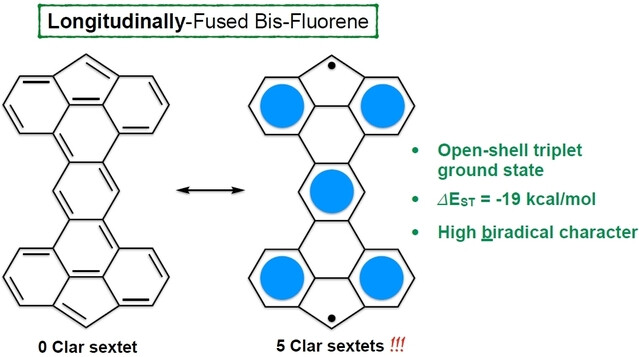
We report the synthesis and properties of four π-extended, fused fluorene derivatives with high diradical character, taking advantage of a molecular design where the closed-shell does not include any Clar sextet, comparatively to a maximum of 5 in the corresponding open-shell state. This led to an unusual open-shell triplet ground state with an outstanding singlet-triplet energy difference (ΔEST) of ca. 19 kcal/mol, one of the highest values reported to date for an all-carbon conjugated scaffold.
Enzyme Catalysis
An Integrated Module Performs Selective ‘Online’ Epoxidation in the Biosynthesis of the Antibiotic Mupirocin
- First Published: 06 August 2024
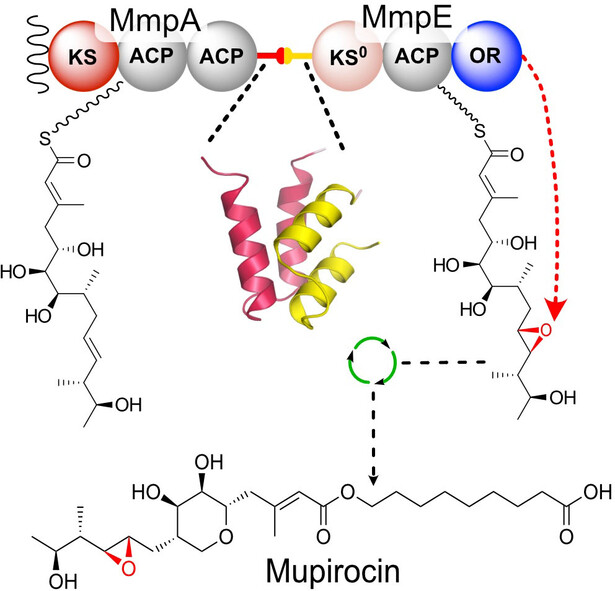
Mupirocin is a clinically important and biosynthetically challenging polyketide antibiotic that requires key assembly steps including epoxidation, tetrahydropyran ring formation and fatty acid esterification. A linear polyketide fragment of mupirocin with six asymmetric centres was synthesized, and it was demonstrated that the mini-module MmpE is docked to MmpA and performs a rare online (ACP-substrate) epoxidation using a previously unannotated ACP.
Photodynamic Therapy
Donor-Acceptor Type Supra-Carbon-Dots with Long Lifetime Photogenerated Radicals Boosting Tumor Photodynamic Therapy
- First Published: 22 August 2024
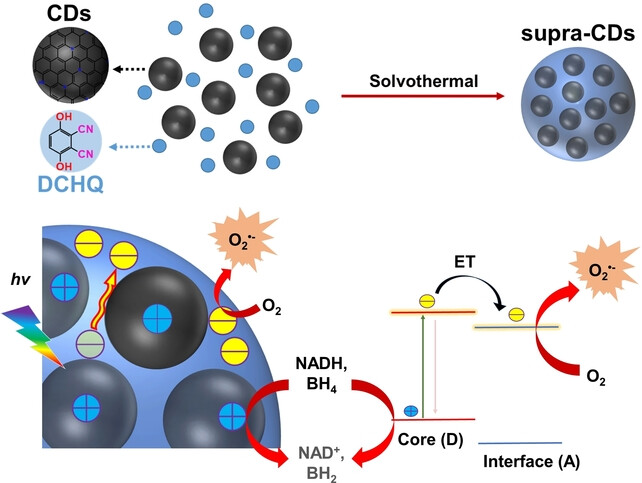
A donor-acceptor type supra-CDs has been fabricated by using red emissive CDs as donor and electron-withdrawing molecule as acceptor. This peculiar donor-acceptor configuration facilitates the efficient charge separation in supra-CDs, thereby generating more superoxide radicals and additional holes-related radicals, which collectively boosts type-I tumor photodynamic therapy.
Electrocatalytic Oxidation | Hot Paper
Visible Light-Switchable Lattice Oxygen Sites for Selective C−H and C(O)−C Bond Electrooxidation
- First Published: 09 September 2024
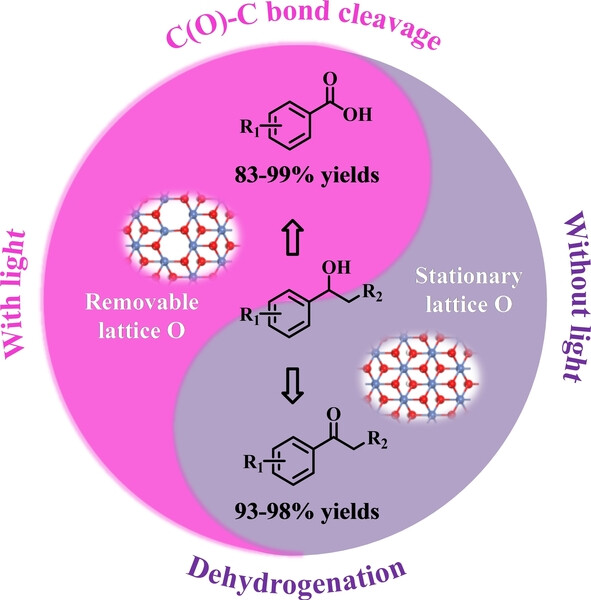
A visible light-switching strategy for in situ formulating stationary or removable lattice-oxygen sites in ESE-NiOOH is developed with ultrahigh selectivity for electrocatalytic upgrading of aromatic secondary alcohols via direct dehydrogenation to acetophenones or C(O)−C bond cleavage to benzoic acids. Precisely modulating lattice-oxygen removability is reported for the first time to activate C−H and vector downstream reactions.
Platinum Drugs | Hot Paper
Platinum-Metformin Conjugates Acting as Promising PD-L1 Inhibitors through the AMP-Activated Protein Kinase Mediated Lysosomal Degradation Pathway
- First Published: 29 August 2024
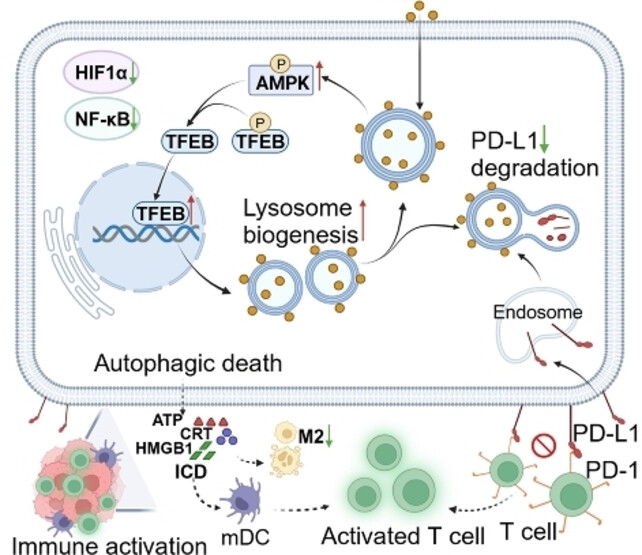
A platinum-metformin conjugate was developed to modulate the immunosuppressive microenvironment through PD−L1 down-regulation and hypoxia reversion, leading to highly efficient immunochemotherapy by a single small-molecular Pt(II) complex. The study led to the proposal of an AMPK-mediated lysosomal degradation pathway of PD−L1 for the first time.
CO2 Electroreduction
Highly Selective CO2 Electroreduction to Multi-Carbon Alcohols via Amine Modified Copper Nanoparticles at Acidic Conditions
- First Published: 13 August 2024
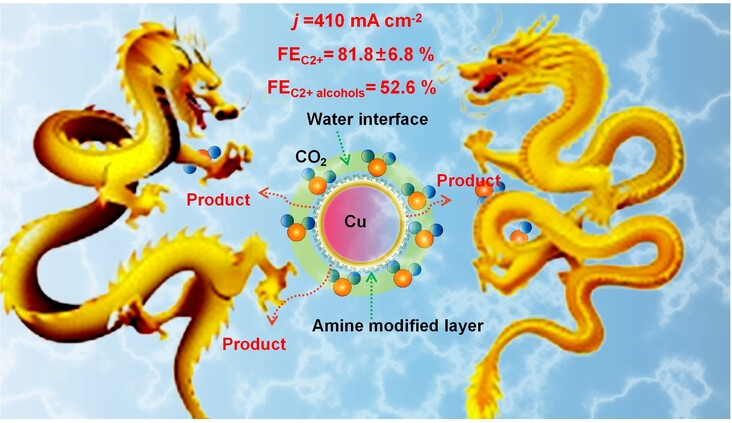
The Faradaic efficiency (FE) of C2+ products was significantly enhanced over Cu by the modification of n-butylamine at acidic media. The FE of C2+ products could reach up to 81.8 % with a total current density of 410 mA cm−2, and the FE of C2+ alcohols was 52.6 %. The amine molecule on the surface of Cu could not only enhance the formation, adsorption and coverage of *CO, but also provide a hydrophobic environment, which resulted in the high selectivity of C2+ alcohols at acidic condition.
Solar Cells
Surface Reaction Induced Compressive Strain for Stable Inorganic Perovskite Solar Cells
- First Published: 30 August 2024

A surface reaction strategy is applied to regulate compressive strain at CsPbI3 surface. The synergistic effect of chemical bonding and strain regulation suppresses interface recombination and phase transition, leading to enhanced PCE of 21.0 % and promising operational stability with T99 over 2000 h at MPP tracking which represents one of the most stable wide band gap PSCs.
Gene Delivery | Hot Paper
Precise Preparation of Supramolecular Spherical Nucleic Acids for Nucleolin-Targeted Gene Delivery
- First Published: 23 August 2024

Precise supramolecular nucleic acids (Supra-SNAs) were designed by incorporating a pair of β-cyclodextrin modified with multiple nucleic acids and adamantane with functional targeting nucleic acid. These Supra-SNAs with multivalent structure exhibit enhanced nuclease resistance, cellular uptake, and gene regulation capabilities in comparison to single-stranded DNA molecule. Moreover, the inhibition of gene expression in tumor cells leads to down-regulate PI3K/AKT signaling pathway and thus effective cell proliferation and death against tumor cells.
Oxygen Reduction Reaction
Pentagon-Rich Caged Carbon Catalyst for the Oxygen Reduction Reaction in Acidic Electrolytes
- First Published: 21 September 2024
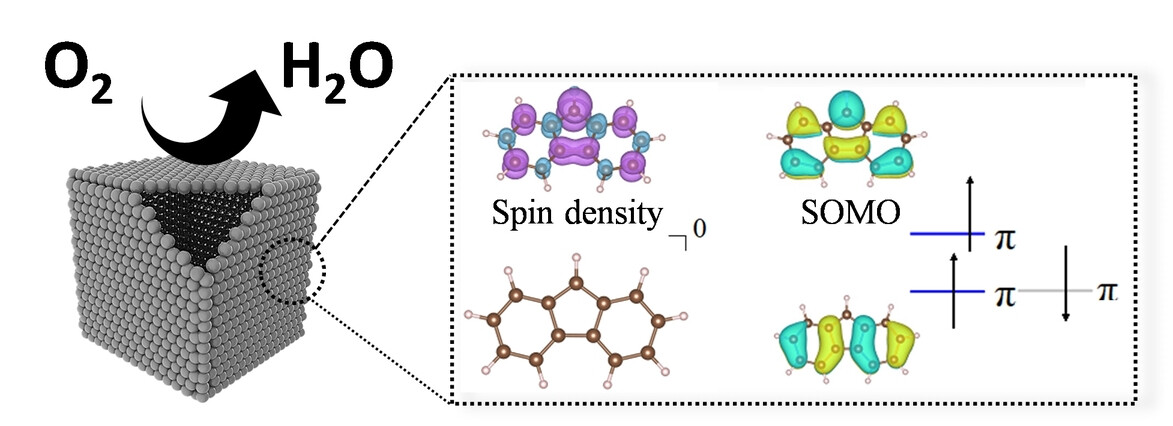
We have synthesized caged carbon catalysts enriched with pentagonal structures and investigated their catalytic activity for the high-performance oxygen reduction reaction. The origin of the ORR activity of the pentagon-containing carbon catalyst lies in the spin that localizes in the pentagon ring. The SOMO of pentagon-containing molecules is characterized by π orbitals and is energetically low, which promotes effective oxygen adsorption.
Kinetics and Vibrational Strong Coupling | Hot Paper
Measuring Kinetics under Vibrational Strong Coupling: Testing for a Change in the Nucleophilicity of Water and Alcohols
- First Published: 21 August 2024

Vibrational Strong Coupling (VSC) is reported to modify chemical reactivity, but its mode of action is not understood. Here, we provide a methodology using fixed-width optical cavities for measuring kinetics under VSC in a reproducible way. The large kinetic dataset showed that VSC does not substantially alter the nucleophilicity of alcohols.
Photochemistry
Silylene-Copper-Amide Emitters: From Thermally Activated Delayed Fluorescence to Dual Emission
- First Published: 15 August 2024
Enzyme Catalysis
Isofunctional but Structurally Different Methyltransferases for Dithiolopyrrolone Diversification
- First Published: 26 August 2024
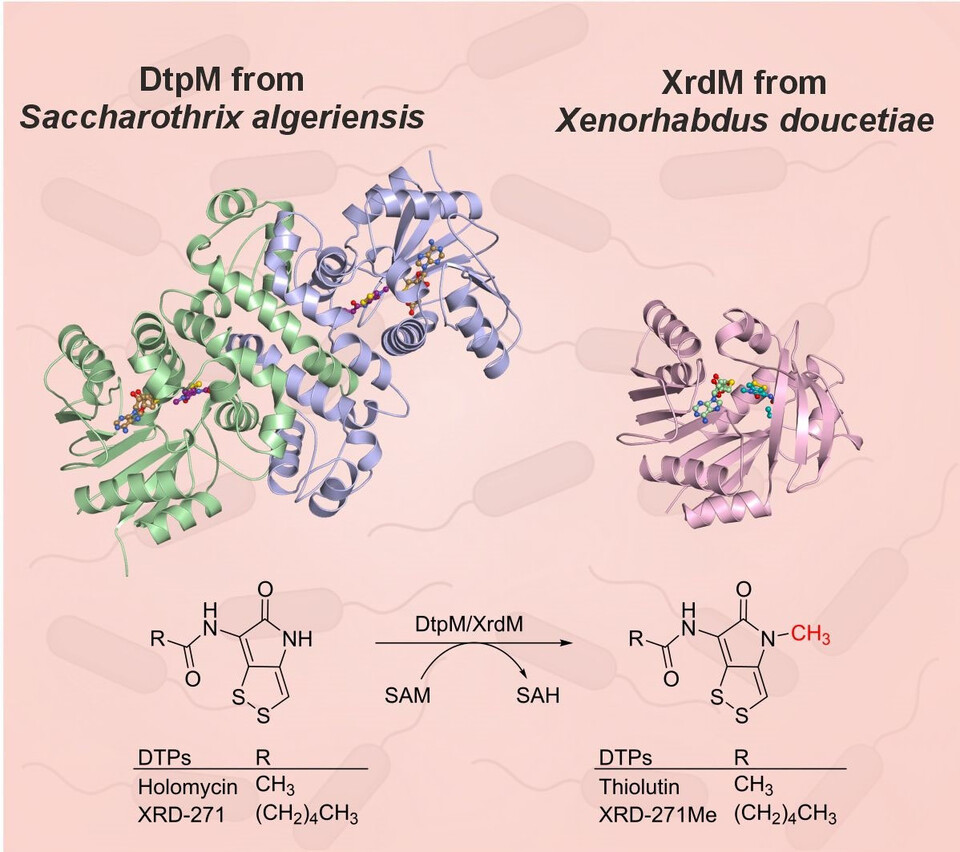
Two for one job: DtpM and XrdM are two bacterial enzymes that have different structures but still catalyze the same reaction: the amide N-methylation of dithiolopyrrolones (DTPs). Ligand binding to both enzymes was studied using X-ray crystallography, modeling, mutagenesis and activity assays. The results suggest that different organisms developed distinct methyltransferases for the same task by convergent evolution.
Cancer Therapeutics
Iridium(III) Photosensitizers Induce Simultaneous Pyroptosis and Ferroptosis for Multi-Network Synergistic Tumor Immunotherapy
- First Published: 23 August 2024

The first case of metal-based small molecule dual-inducers of pyroptosis and ferroptosis is reported here. The iridium(III)-triphenylamine photosensitizers, IrC and IrF, can induce DNA damage-related gasdermin D (GSDMD)-mediated pyroptosis, along with regulating iron stress-related gasdermin E (GSDME)-mediated pyroptosis and glutathione peroxidase 4 (GPX4) depletion synergistically promoted ferroptosis, and further trigger a strong immune response.
Zn-Air Batteries
A Rechargeable Urea-Assisted Zn-Air Battery With High Energy Efficiency and Fast-Charging Enabled by Engineering High-Energy Interfacial Structures
- First Published: 14 September 2024
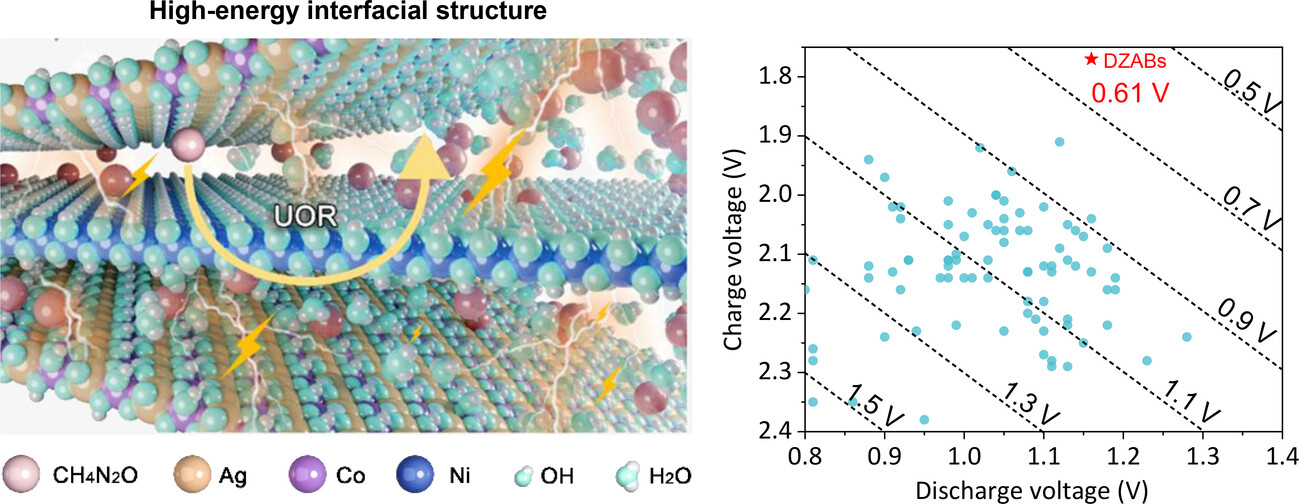
Electrochemical urea oxidation reaction (UOR) offers a promising alternative to the oxygen evolution reaction (OER) in rechargeable zinc-air batteries (ZABs). An interface chemistry modulation strategy is proposed to boost UOR kinetics by creating a high-energy interfacial heterostructure. The strong interactions significantly promote internal electron exchanges, and the improved electron delocalization led to the formation of stronger bonds between Co sites and urea CO(NH2)2. This enhancement promotes a preference for urea to occupy Co active sites over OH*.
Zinc-Iodine Batteries
Diatomic Catalysts for Aqueous Zinc-Iodine Batteries: Mechanistic Insights and Design Strategies
- First Published: 13 September 2024
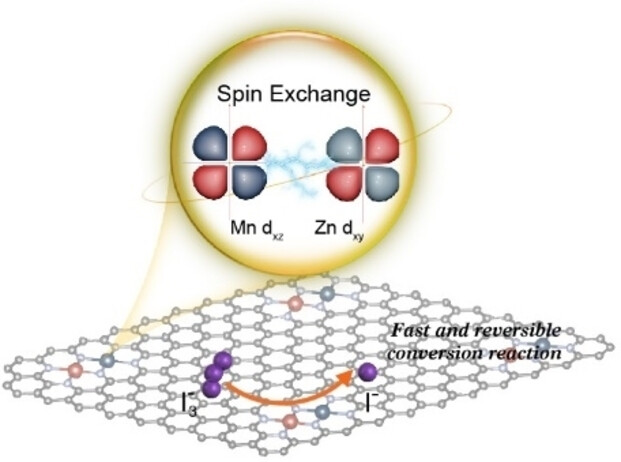
The spin exchange effect between diatomic sites activates the diatomic catalysts, effectively suppressing the shuttle effect of triiodide and facilitating the iodine conversion reaction. Utilizing MnZn−NC diatomic catalysts, the zinc-iodine battery demonstrates both a high specific capacity and exceptional cycling stability over 320,000 cycles.
Polymer Chemistry | Hot Paper
Rewritable Surface-Grafted Polymer Brushes with Dynamic Covalent Linkages
- First Published: 15 August 2024
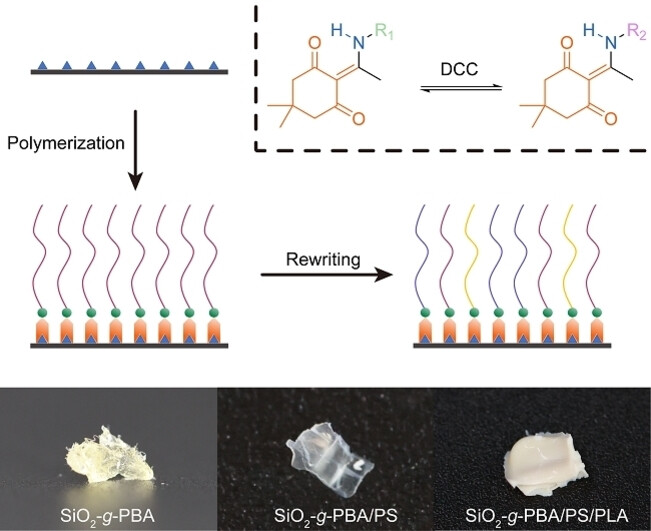
A strategy for the fabrication of rewritable surface-initiated polymer brushes with a relatively high grafting density grafted from both nanoparticles and macroscopic surfaces has been developed. The incorporation of a dynamic covalent chemical linkage at the “root” of the polymer brushes would, in principle, enable unlimited rounds of degrafting and regrafting of polymer brushes.
CO2 Reduction
Dynamically Stabilizing Oxygen Atoms in Silver Catalyst for Highly Selective and Durable CO2 Reduction Reaction
- First Published: 16 September 2024
Circularly Polarized Luminescence | Hot Paper
Hydrogen Bond-Induced Flexible and Twisted Self-Assembly of Functionalized Carbon Dots with Customized-Color Circularly Polarized Luminescence
- First Published: 16 September 2024
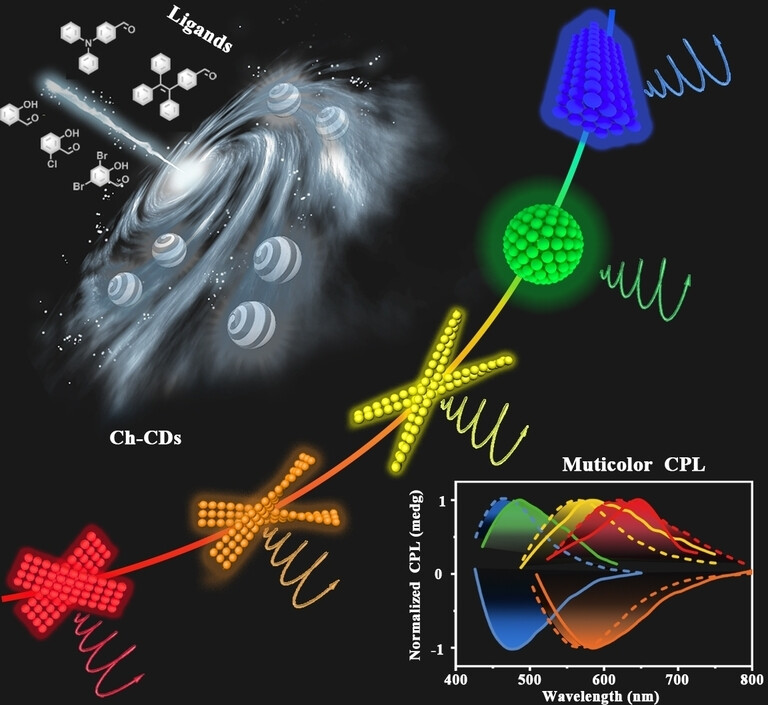
We report the exciting discovery of the surface modification of carbon dots drives the construction of an assembly asymmetric environment to realize a full-color circularly polarized luminescence (CPL) in the aggregated state. Moreover, we explore panchromatic as well as white-light CPL applications of light emitting diodes and large flexible optical films, which provide new material strategies for virtual reality, medical imaging, and scientific visualization, among others.
CO2 Reduction
Rare Earth Er-Nd Dual Single-Atomic Catalysts for Efficient Visible-light Induced CO2 Reduction to CnH2n+1OH (n=1, 2)
- First Published: 20 September 2024
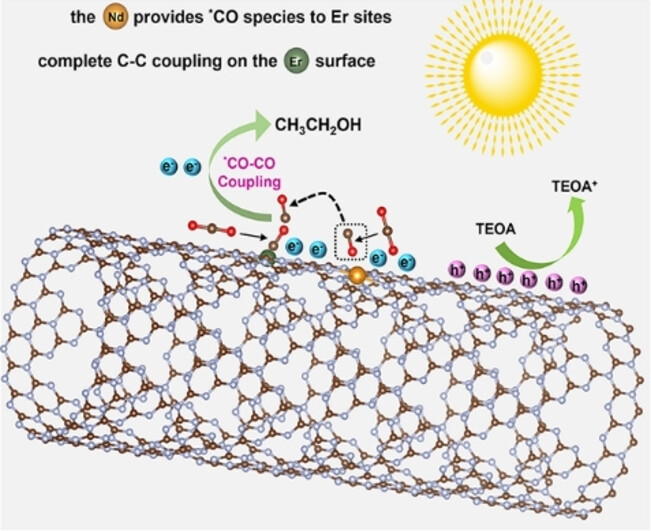
The dual single atoms (SAs) catalyst Er3Nd1/CN is designed and synthesized by atomic confinement and coordination strategies, and exhibits record-level rates of 1761.4 μmol g−1 h−1 and 987.7 μmol g−1 h−1 for CH3CH2OH and CH3OH in CO2 photoreduction. Synchrotron radiation, in-situ test, and density functional theory (DFT)calculations indicate that weaker *CO adsorption on the Nd tends to desorb and migrate to Er site for C−C coupling, which is the key to ethanol synthesis.
Cancer Immunotherapy
Non-Natural MUC1 Glycopeptide Homogeneous Cancer Vaccine with Enhanced Immunogenicity and Therapeutic Activity
- First Published: 14 September 2024
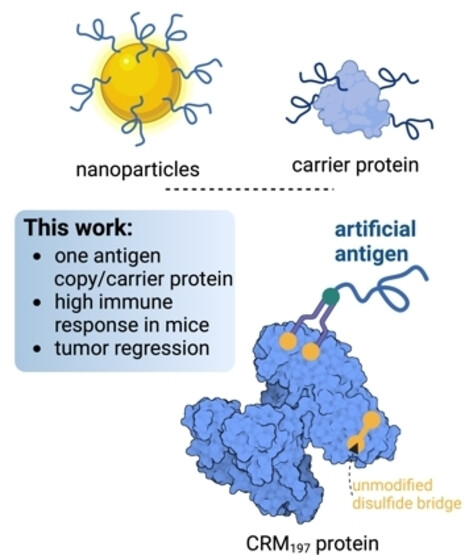
A chemically defined vaccine is prepared by combining the structural design of a non-natural glycopeptide antigen with a site-specific protein modification. The resulting vaccine, which contains a single copy of the antigen, is both prophylactically and therapeutically effective. Importantly, this approach refutes a prevailing dogma that glycoconjugate vaccines require multivalent presentation of antigens.
Perovskite Photocatalysts | Very Important Paper
Photocatalytic Overall Water Splitting with a Solar-to-Hydrogen Conversion Efficiency Exceeding 2 % through Halide Perovskite
- First Published: 28 August 2024
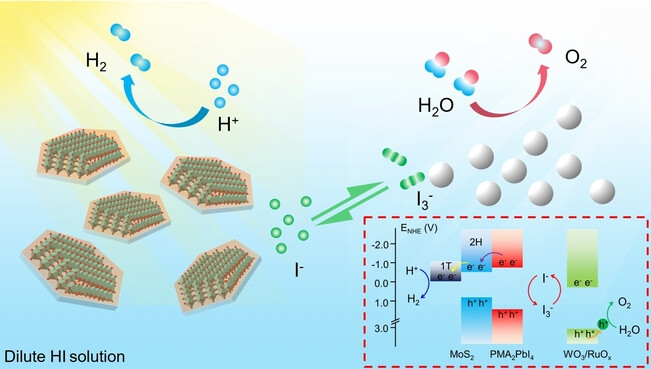
A photocatalytic overall water splitting system is successfully developed using I3−/I− as the shuttle redox couple to bridge the H2-producing half-reaction with the O2-producing half-reaction. The system uses the halide perovskite of PMA2PbI4/MoS2 as the H2 evolution photocatalyst and theWO3/RuOx as the O2 evolution photocatalyst, achieving a H2/O2 production in stoichiometric ratio with an excellent STH of 2.07 %.
Organic Semiconductors | Hot Paper
Individually Tunable Energy Levels of Oligomers Based on N−B←N Units
- First Published: 21 August 2024

A series of monodisperse oligomers based on electron-accepting double B←N bridged bipyridine (BNBP) unit with individually tunable energy levels were developed. This unique energy level tuning is attributed to the separation of LUMO and HOMO at the atomic scale of the BNBP unit and the different contributions of charge transfer transitions in the excited states.
DNA Nanotechnology
DNA Origami Vesicle Sensors with Triggered Single-Molecule Cargo Transfer
- First Published: 09 September 2024
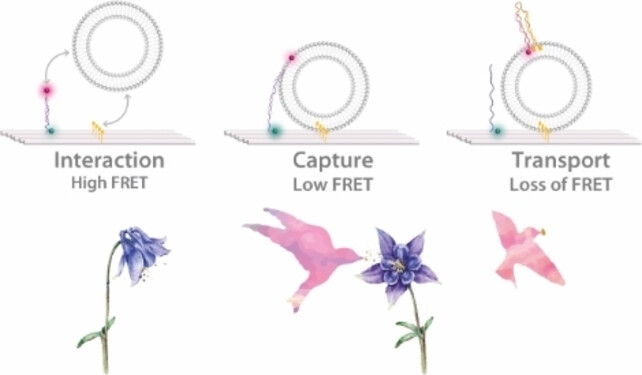
This study presents a DNA origami-based biosensor for precise lipid vesicle detection and cargo delivery using single-molecule Fluorescence Resonance Energy Transfer (smFRET). The hydrophobic ATTO647N-modified single-stranded DNA (ssDNA) leash on the sensor detects vesicle binding via FRET changes and delivers molecular cargo through triggered strand displacement reaction. This platform offers innovative applications in biosensing and controllable stoichiometric loading of vesicles.
EPR Spectroscopy | Hot Paper
Pulsed EPR Methods in the Angstrom to Nanometre Scale Shed Light on the Conformational Flexibility of a Fluoride Riboswitch
- First Published: 03 September 2024

A fluoride sensing riboswitch was investigated by EPR-based distance measurements. Electron-electron double resonance revealed preorganisation of the stem structures and conformational flexibility while electron-nuclear double resonance demonstrates low structural heterogeneity around the fluoride site and distinct differences between the crystal and solution structures.
Gas Separation | Hot Paper
Enhanced Propylene/Propane Separation via Aniline-Decorated ZIF-8 Membrane: Lattice Rigidity Adjustment and Adsorption Site Introduction
- First Published: 11 September 2024
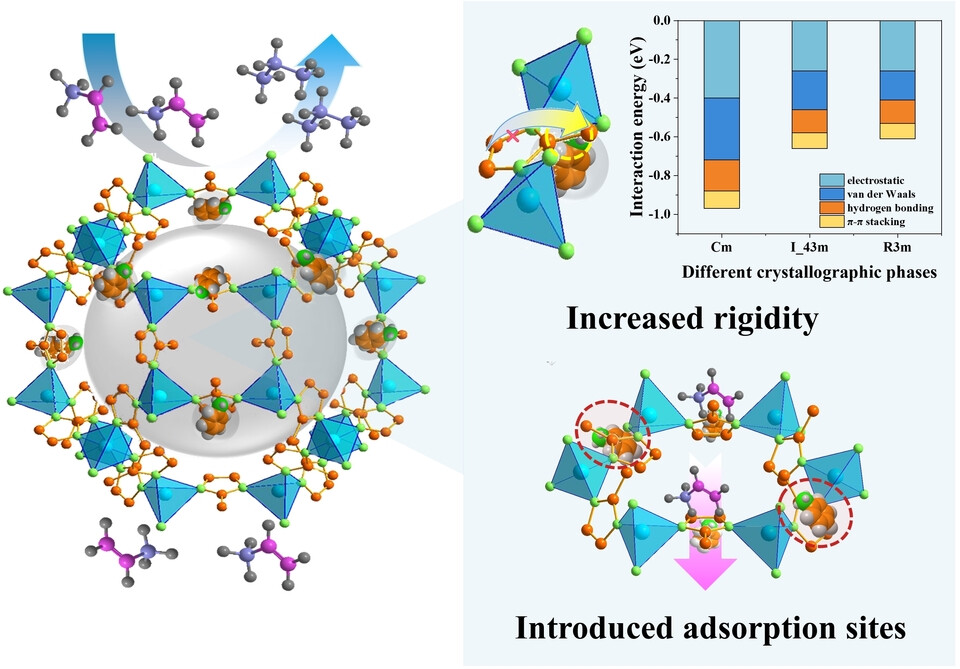
The aperture flexibility of the metal–organic framework (ZIF-8) and the inherent weak adsorption ability of propylene can be tailored through the introduction of a guest molecule of aniline, encapsulated in the cavities of ZIF-8. The rigid Cm polymorph phase instead of the usual I_43 m phase of ZIF-8, along with the introduction of aniline as an adsorption site, enables the membrane good and stable C3H6/C3H8 separation.
Reductive Amination
Metallic Impurities in Electrolysis: Catalytic Effect of Pb Traces in Reductive Amination and Acetone Reduction
- First Published: 28 August 2024
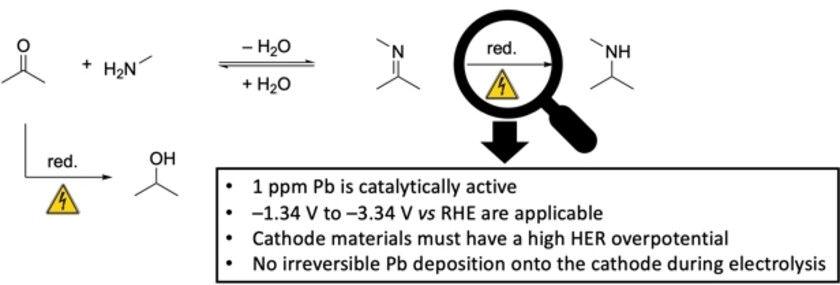
Studying the reductive amination of acetone with methylamine as nitrogen source using electrochemistry revealed the catalytic activity of 1 ppm Pb. In addition, the effects of the applied potential and the cathode materials on the reaction were investigated. Finally, the results were transferred to the electrochemical hydrogenation of acetone.
Mechanochemistry | Hot Paper
High-Energy Ball Milling Enables an Ultra-Fast Wittig Olefination Under Ambient and Solvent-free Conditions
- First Published: 29 August 2024
Communication
Organic Materials
K+-Mediated vs Pd-Catalyzed Cyclotrimerization of 9,10-Didehydrotribenzo[8]annulene (TribenzoCOTyne): Stereodivergent Access to (α,α,α)- and (α,α,β)-Fragments of Cubic Graphite
- First Published: 04 September 2024
![K+-Mediated vs Pd-Catalyzed Cyclotrimerization of 9,10-Didehydrotribenzo[8]annulene (TribenzoCOTyne): Stereodivergent Access to (α,α,α)- and (α,α,β)-Fragments of Cubic Graphite](/cms/asset/bc488ab1-db0c-4684-9eed-0a1f770c768c/anie202414017-toc-0001-m.jpg)
Remarkable properties have been predicted for cubic graphite, a hypothetical 3D carbon allotrope composed of carbon cages (C48). A sixty carbons fragment of cubic graphite, benzofused (α,α,α)-tris(tribenzo[8]annulene) (TTBA), was now assembled by K+-mediated cyclotrimerization of tribenzoCOTyne, that contains 36 carbon atoms properly arranged in a well-defined cubic graphite cage (C48).
Porphyrinoids | Hot Paper
Organic Materials
Resonance-Assisted Self-Doping in Robust Open-Shell Ladder-Type Oligoaniline Analogues
- First Published: 01 August 2024
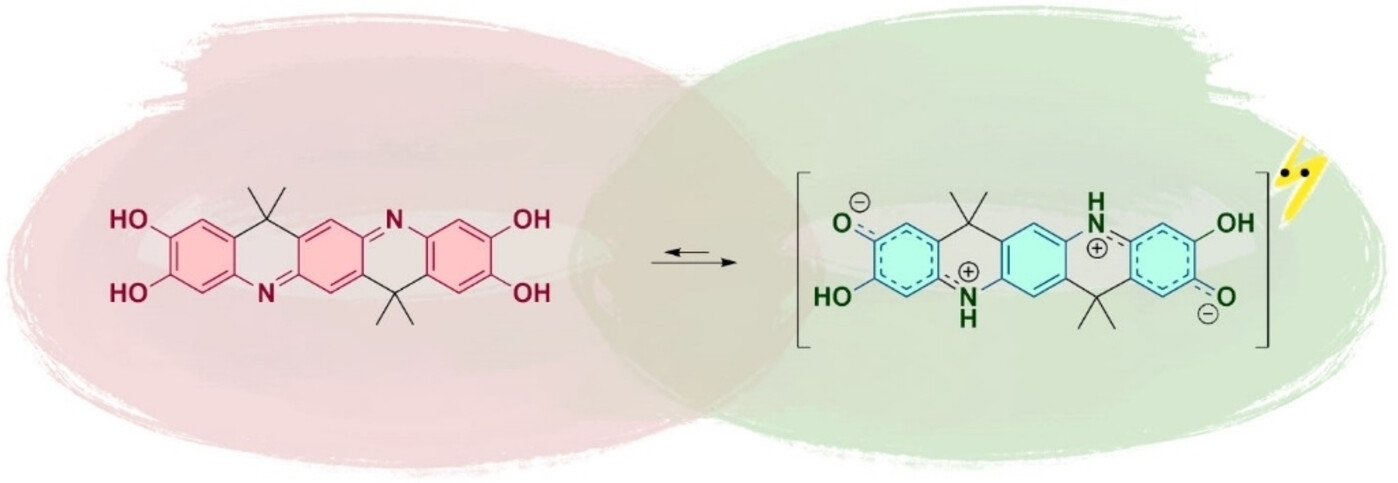
A novel self-doping mechanism is introduced in ladder-type oligoaniline-derived organic conductors. This mechanism, facilitated by resonance-assisted proton transfer, enables efficient self-doping of the organic electronic compound, resulting in a durable conductive material without the need for an external dopant. The findings open new possibilities for creating organic conductors that are both high-performing and long-lasting.
Polymer Chemistry | Hot Paper
Mechanistically Different Mechanochromophores Enable Calibration and Validation of Molecular Forces in Glassy Polymers and Elastomeric Networks
- First Published: 13 August 2024
Tau proteins
dGAE(297–391) Tau Fragment Promotes Formation of Chronic Traumatic Encephalopathy-Like Tau Filaments
- First Published: 26 August 2024
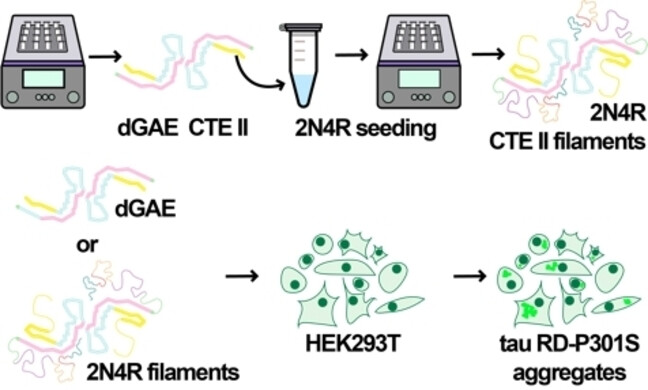
In vitro methods for obtaining disease-specific filamentous aggregates of the microtubule-associated protein tau are needed for diagnostics and drug development against tauopathies. We show that the chronic traumatic encephalopathy type II fold can be propagated onto full-length tau by seeding the aggregation with the tau fragment dGAE. The work brings us closer to in vitro preparation of disease-specific tau filament types.
NO Reductases | Hot Paper
Synthesis and Structural Characterization of a Non-Heme Iron Hyponitrite Complex
- First Published: 10 September 2024
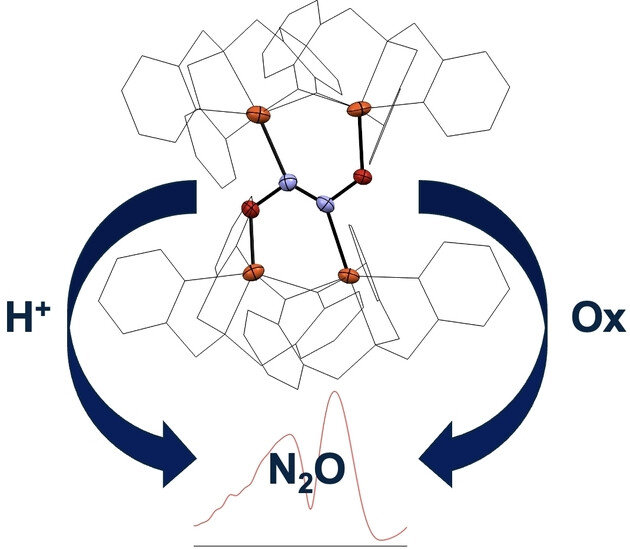
Fe-Hyponitrite Reactivity: The Fe-hyponitrite complex 3 was generated from preformed hyponitrite and characterized by spectroscopic methods and X-ray crystallography. Upon protonation or oxidation, quantitative N2O formation occurs. Lewis acidity of iron plays a key role in reactivity, as a more Lewis acidic iron center leads to the cleavage of the N=N bond of hyponitrite.
Carbonates | Hot Paper
Synthesis and Characterization of Lithium Pyrocarbonate (Li2[C2O5]) and Lithium Hydrogen Pyrocarbonate (Li[HC2O5])
- First Published: 06 November 2024
![Synthesis and Characterization of Lithium Pyrocarbonate (Li2[C2O5]) and Lithium Hydrogen Pyrocarbonate (Li[HC2O5])](/cms/asset/3ceb4a34-7a3c-489a-819b-7211f7d820af/anie202409822-toc-0001-m.jpg)
Li[HC2O5] is the first hydrogen-containing pyrocarbonate. It was synthesized by a reaction of CO2 and H2O with Li2[CO3] at moderate pressures and temperatures together with an anhydrous lithium pyrocarbonate (Li2[C2O5]) in a DAC. The crystal structure was determined by single crystal X-ray diffraction and confirmed by DFT-based calculations. The structure refinement and DFT calculations show that in Li[HC2O5] a symmetric hydrogen bond is present in the hydrogenated pyrocarbonate anion [HC2O5]−.
Synthetic Methods
An Aza-Prilezhaev-Based Method for Inversion of Regioselectivity in Stereospecific Alkene 1,2-Aminohydroxylations
- First Published: 22 August 2024

Under acidic conditions (TFA) and in the presence of water, BocNHOTs promotes stereospecific 1,2-aminohydroxylations of alkenes. The processes involve intermolecular aza-Prilezhaev aziridination followed by stereospecific SN2-like opening by water. This reagent combination provides regiochemical outcomes that are opposite to those observed using epoxidation initiation 1,2-aminohydroxylation protocols. The reaction platform enables other classes of alkene 1,2-aminofunctionalization, and intramolecular processes are also feasible, including unusual variants that evoke azabicyclobutane reactivity.
Polymer Chemistry
Hydroaminoalkylation for Amine Functionalization of Vinyl-Terminated Polyethylene Enables Direct Access to Responsive Functional Materials
- First Published: 30 October 2024

This paper presents a novel method for producing functionalized polyethylenes (PEs) via a 100 % atom economic tantalum-catalyzed hydroaminoalkylation of vinyl-terminated polyethylene (VTPE). Our approach addresses current synthetic challenges by enabling the efficient incorporation of amine functionalities into crystalline PEs in the melt phase. These functional materials have diverse potential applications and here we show that aminated PEs exhibit enhanced material properties, and pH responsive properties results in antibacterial PE films.
Enzyme Mimics
Molecularly Imprinted Polymers for Highly Specific Bioorthogonal Catalysis Inside Cells
- First Published: 05 August 2024

The molecularly imprinted enzyme mimics (MIEs) containing a copper center and specific substrate binding domain, could perform highly-specific abiotic transformation inside cells, particularly in a gain-of-functions. Importantly, Cu-MIEs exclusively catalyze target substrates and retain its superb performance even in the presence of copper-poisoning molecules like glutathione (GSH).
Asymmetric Synthesis
Dynamic Asymmetric Diamination of Allylic Alcohols through Borrowing Hydrogen Catalysis: Diastereo-Divergent Synthesis of Tetrahydrobenzodiazepines
- First Published: 21 September 2024
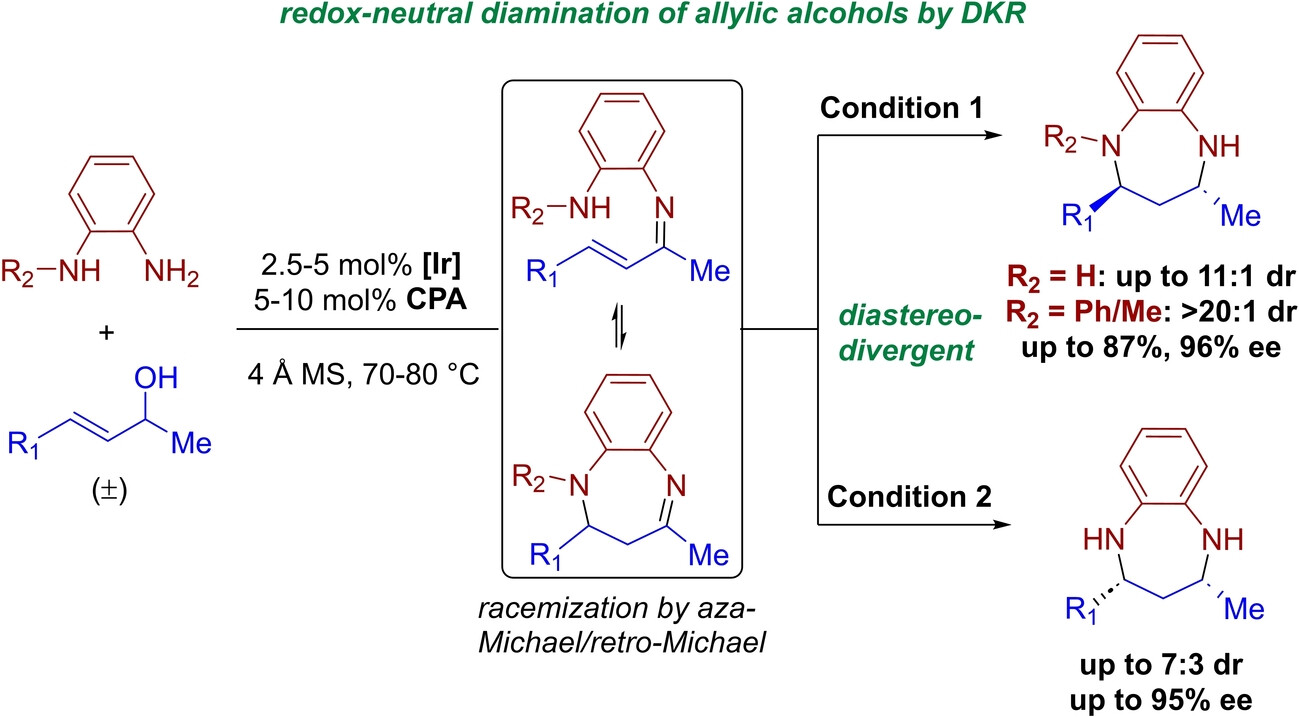
We present herein an unprecedented, catalytic enantioconvergent diamination of racemic allylic alcohols with the construction of two C−N bonds and 1,3-nonadjacent stereocenters. This iridium/chiral phosphoric acid cooperative catalytic system operates through an atom-economical borrowing hydrogen amination/aza-Michael cascade, and converts readily available phenylenediamines and racemic allylic alcohols to 1,5-tetrahydrobenzodiazepines in high enantioselectivity. An intriguing solvent-dependent switch of diastereoselectivity was also observed.
DNA Nanotechnology
Rapid Thermal Drying Synthesis of Nonthiolated Spherical Nucleic Acids with Stability Rivaling Thiolated DNA
- First Published: 22 August 2024
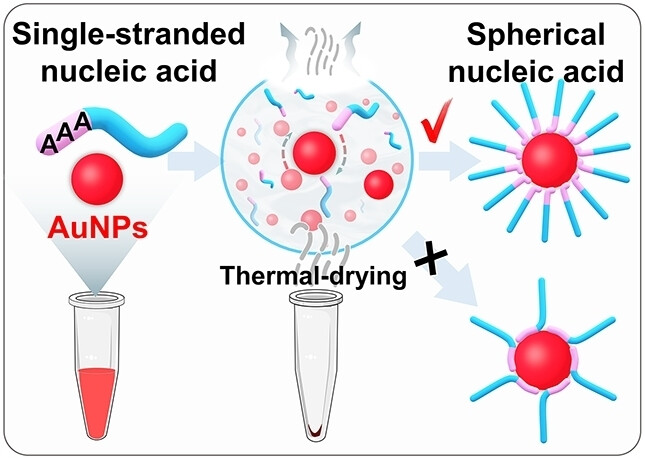
By thermal drying, highly stable spherical nucleic acids with a high DNA density were synthesized using nonthiolated DNA, rivaling the performance of thiolated DNA. A poly-adenine block with as few as two consecutive terminal adenine bases is sufficient for anchoring on gold nanoparticles. Applications of nonthiolated SNAs were validated in both solution and paper-based sensors.
Urea Synthesis | Very Important Paper
Electron Deficiency is More Important than Conductivity in C−N Coupling for Electrocatalytic Urea Synthesis
- First Published: 02 August 2024
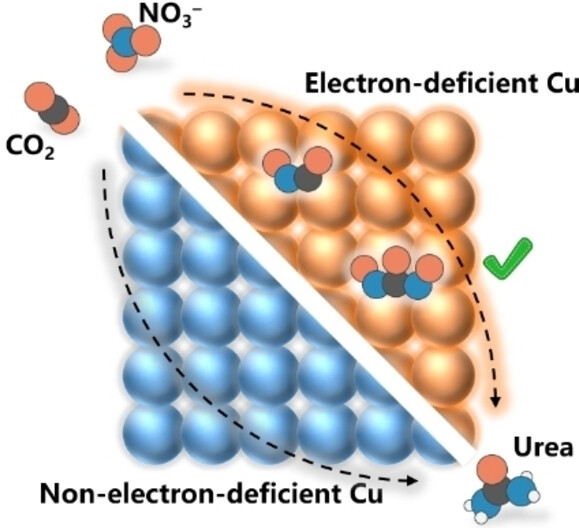
The electrocatalytic C−N coupling from CO2 and nitrate emerges as one of the solutions for direct urea synthesis. In this work, we constructed electron-deficient Cu sites with electrochemical reduction tolerance by the strong metal-polymer semiconductor interaction, to boost efficient and durable urea synthesis. The vital role of electron-deficient Cu in adsorption and C−N coupling of oxygen-containing species was disclosed.
Alkylidenes | Hot Paper
Syntheses of Tungsten Imido Cyclohexylidene Complexes Using Perfluoro-t-Butanol or Hexafluoro-t-Butanol as Acids
- First Published: 13 August 2024
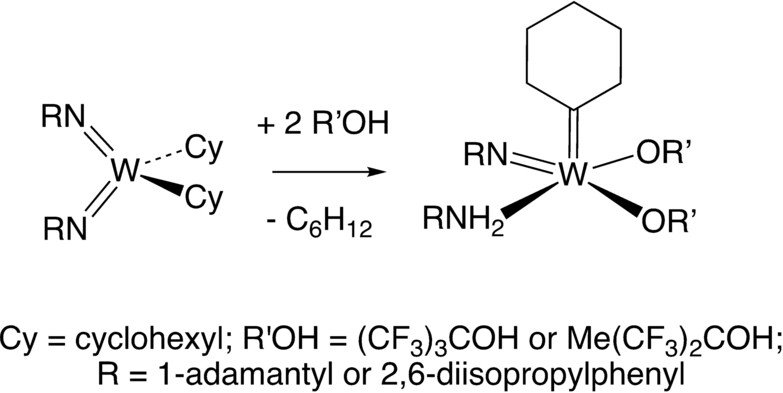
The metathesis-active W(NR)(C6H10)(ORF9)2 (C6H10=cyclohexylidene) complexes are available in three steps (tungsten oxides→W(NR)2Cl2→W(NR)2Cy2→W(NR)(C6H10)(ORF9)2) without making alkylidene intermediates and without using strong acids. The bisnonafluoro-t-butoxide alkylidene complexes can be converted readily into bisalkoxide, bispyrrolide, and MAP complexes through nucleophilic substitutions. Cyclohexylidene complexes appear to be more readily prepared than neophylidene complexes, perhaps in part because any cyclohexene complex formed through β hydrogen abstraction is isomerized to a cyclohexylidene complex by RF9OH. This mild acid-catalyzed approach is an attractive alternative to established syntheses of tungsten neopentylidene or neophylidene imido complexes.
Photopharmacology
Cell-Specific Optical Control of AMPA Glutamate Receptors with a Photoswitchable Tethered Antagonist
- First Published: 27 August 2024
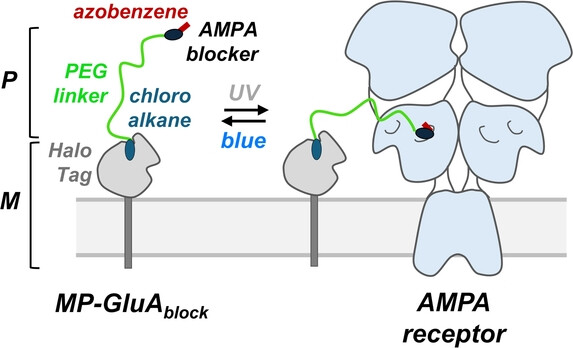
AMPA receptors are central to excitatory synaptic transmission in the brain but difficult to control with sufficient precision. We developed MP-GluAblock, a cell specific light-controllable AMPAR blocker that consists of a photo-switchable compound (P) that is targeted to specific cells via an expressed membrane-anchor protein (M). Our approach could be used to dissect AMPAR signaling with unprecedented cellular and spatiotemporal specificity.
Photoswitches
A High-Quality Photoswitchable Probe that Selectively and Potently Regulates the Transcription Factor RORγ
- First Published: 09 September 2024
Protease Inhibitors
Chemically Stable Diazo Peptides as Selective Probes of Cysteine Proteases in Living Cells
- First Published: 09 October 2024




